Azores: the last reserve of flora in the mid-Atlantic
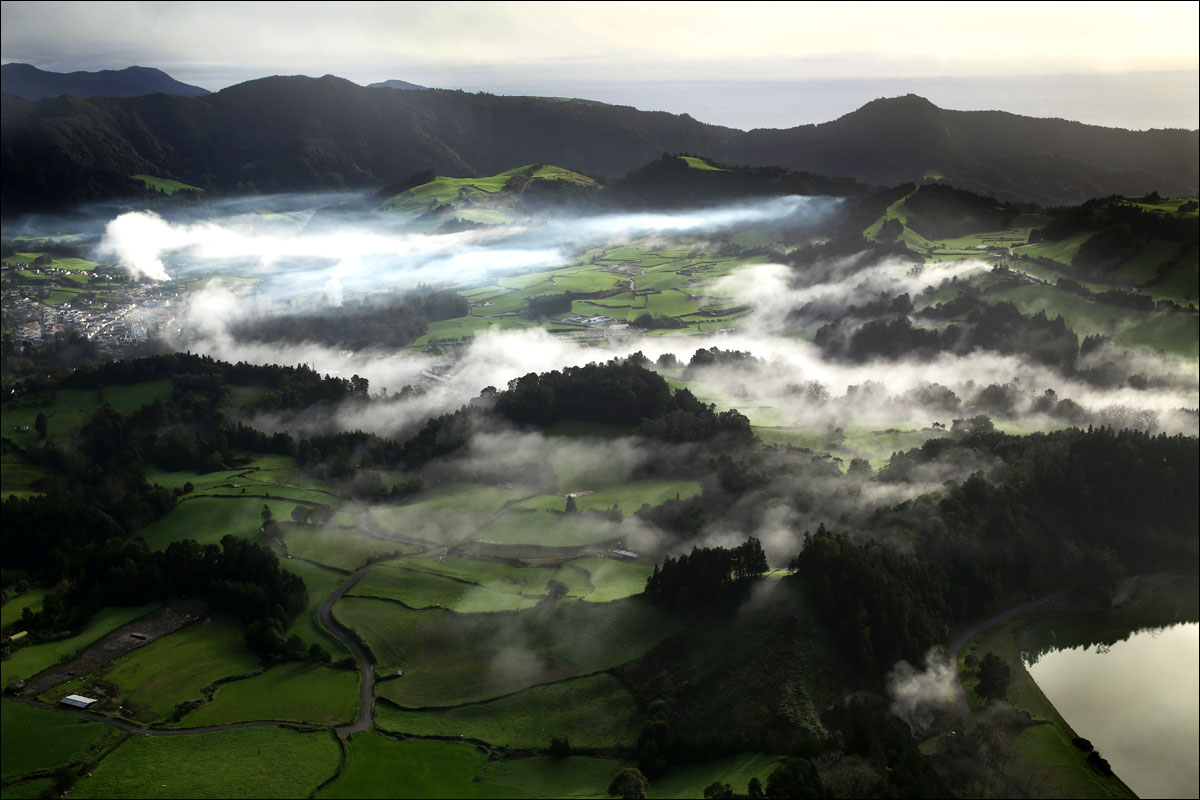
The valley inside the crater of the volcano, a small "Lost World", warm and reliably protected from the weather outside. The lake is so generally +75 degrees Celsius in some places.
The Azores is an archipelago in the middle of the Atlantic Ocean, about halfway between Europe and America. Since these are the only islands for miles around, there are three cool special effects:
- There is a very isolated biome . For example, there is an endemic Azorean bullfinch Pyrrhula murin (although there is an eternal summer, even on the New Year). There is nothing poisonous or otherwise dangerous to humans among animals.
- Very high humidity due to temperature inversions and “rough” mountains, stopping the clouds (as a result - a paradise for flora)
- And here is a very important transshipment point both on the road from Africa and India (recall the times of the East India Trade Campaign), and starting from the Second World War - the basis for refueling and convoys.
And thanks to the isolation, excellent climate, volcanic soil with a bunch of fertilizers, closed caldera valleys (in place of old craters), plants can and should be collected here that will be protected from large-scale biological disasters of the continents.
And the islands are very, very interesting. I'll tell you now.
What is it
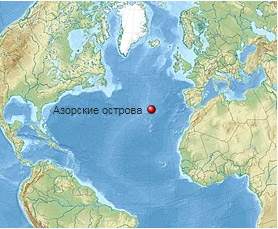
Picture from Wikipedia
Azores themselves are the tops of the mountains of the Mid-Atlantic Ridge. Some just stuck out above the water, and some were literally just a few meters away (the underwater mountain of Lomonosov between Florish and the central group did not reach 18 meters from the surface). And this ridge is the place where African, Eurasian and American plates meet. Therefore, here by geological standards is rather stormy.
Under the water a large plateau, at its edges awesome deep - up to 5 kilometers.
The islands are very young, they were formed "only" 5-6 million years ago. And continue to form, by the way, just recently, 20 years ago, Faial grew a bit. Here, according to the last census of volcanoes, 1,766 pieces (most secondary), of which as many as 9 are active.

A small island near Terceira. If you look closely, you can see that it was a volcano. After the earthquake, it split along the crater chord, and water poured inside.

And here is another one that did not split. Until.
Before the arrival of the people there was a green paradise, almost all the islands were covered with forests. But the Portuguese are very fond of wood. Therefore, the forests were cut down. Modern forests are already new, and are no longer only local plants, so they are not evergreens (for example, the chestnut still cannot get used to the fact that there will never be winter again). The remains of the old forest are strictly protected as relict zones of the EU bio-reserve.
A bit of history
The first to stumble upon the Azores were the Portuguese. The fact is that at some point they turned out to be the most technologically savvy nation in Europe (thanks in large part to the reconquista, that is, the reconquest of the lands of western Europe from the Arabs who captured them). The Portuguese, it seems, did not discard the technological legacy of the conquerors, but carefully studied everything. In particular, mathematics and astronomy. And then uncle Vaska da Gama (we have Vasco da Gama) and opened the sea route to India, which brought the country a lot of profit.

You can show this photo to children as a monument to grandfather Mazay. But actually it is Vaska. He has such a stern face, because he buried his brother in the Azores.
At that time Portugal did not have a lot of resources, and all the good things came in from the continent. And when you live on the Iberian Peninsula, then you have somewhere behind all European countries behind. That is, the same spices and silk come up in price several times. And a very long time. The concept of “swimming all this” was considered, but Vasco was the first to return. And he made his way through the Azores. Because the winds do not blow right near the coast of Africa, but are brought in the middle of the Atlantic. Therefore, there are many who landed by chance (even the Vikings, like), but to meet these islands on purpose is more difficult.
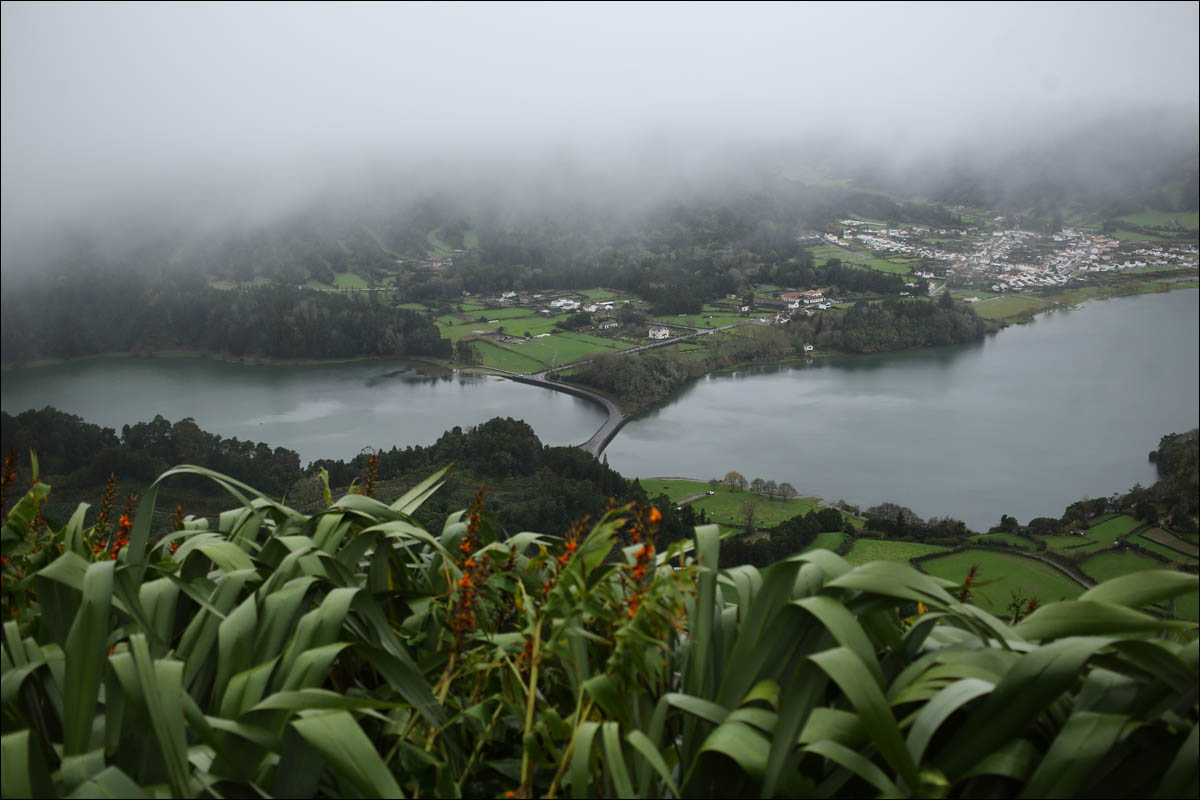
Valley of Seven Cities. It was colonized by immigrants from seven cities, respectively.
At the time of Heinrich the Navigator, there were many different steep expeditions along the seas, and the Portuguese were pushing the boundaries of the inhabited universe. Captain Diogo Silves (most likely it was he or Gonzalo Velho) found the islands in 1427 and recorded their exact coordinates (as far as possible without chronometers). He also landed several goats and a goat. And waved to them from the deck. The goat was especially happy, because the Azores is almost a paradise by the amount of grass.

Somewhere between this event and the beginning of the colonization of Azores came another ship. They saw that the goats were alive, they had devoured that same sentimental goat and wrote a memorandum that the archipelago is habitable.
In general, the Portuguese checked the islands in precisely this way: they would plant test goats and then check after a few years how they feel.
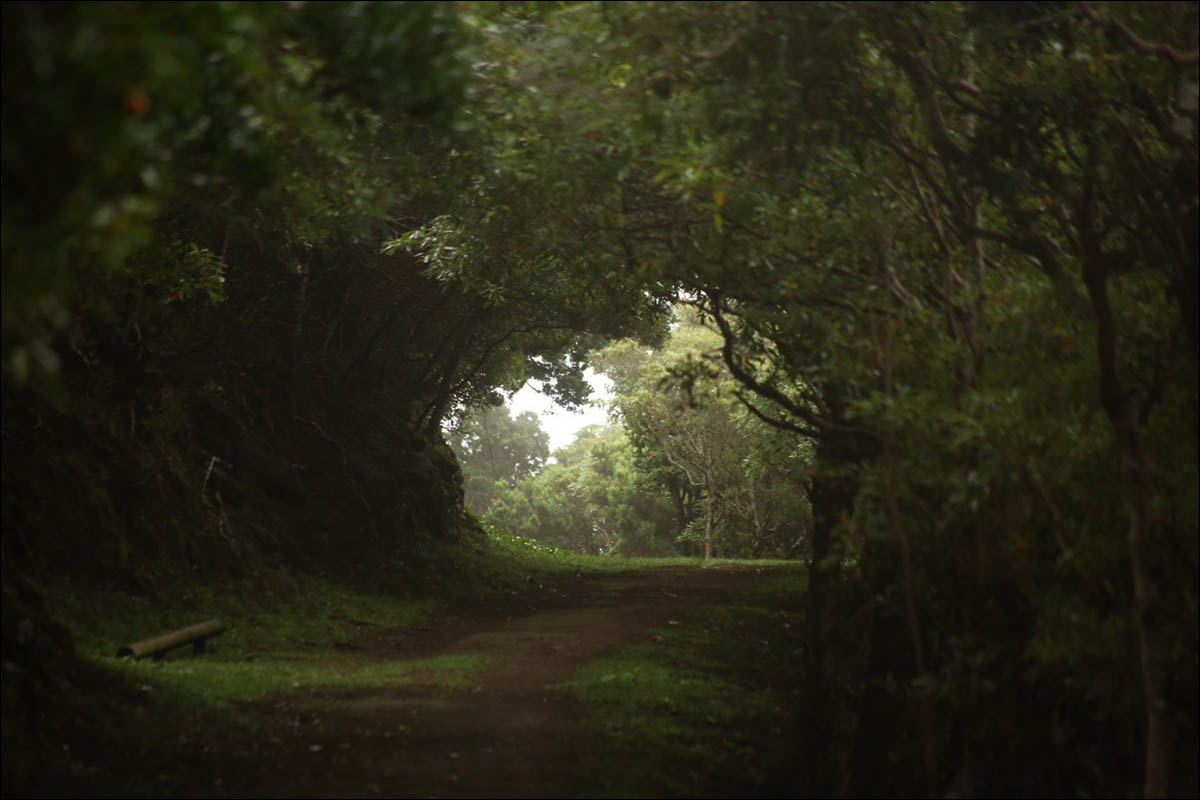
Something like this was (assuming that the colonists trod up this road, but not so smoothly)
In 1439 the first colonial fleet arrived. The settlers quickly realized that there was nothing poisonous on the islands, and the largest beast in the forest was a hedgehog. Which sniffs threateningly. And another local black rat, which was almost supplanted by the brought gray one.
The colonists immediately began to breed cows, sheep, goats and horses, then plant fruit and fish. Running a little ahead - the cows got the best here, and therefore managed to preserve almost all the greenery of the island.

And deer ! Suddenly, someone, too, brought them along with horses and cows.
Farmers immediately began to pick the ground, trying to sow something. It turned out badly because there were incredibly many stones. But farmers are stubborn people, so they simply took out the stones and folded the walls out of them with the tetris method.
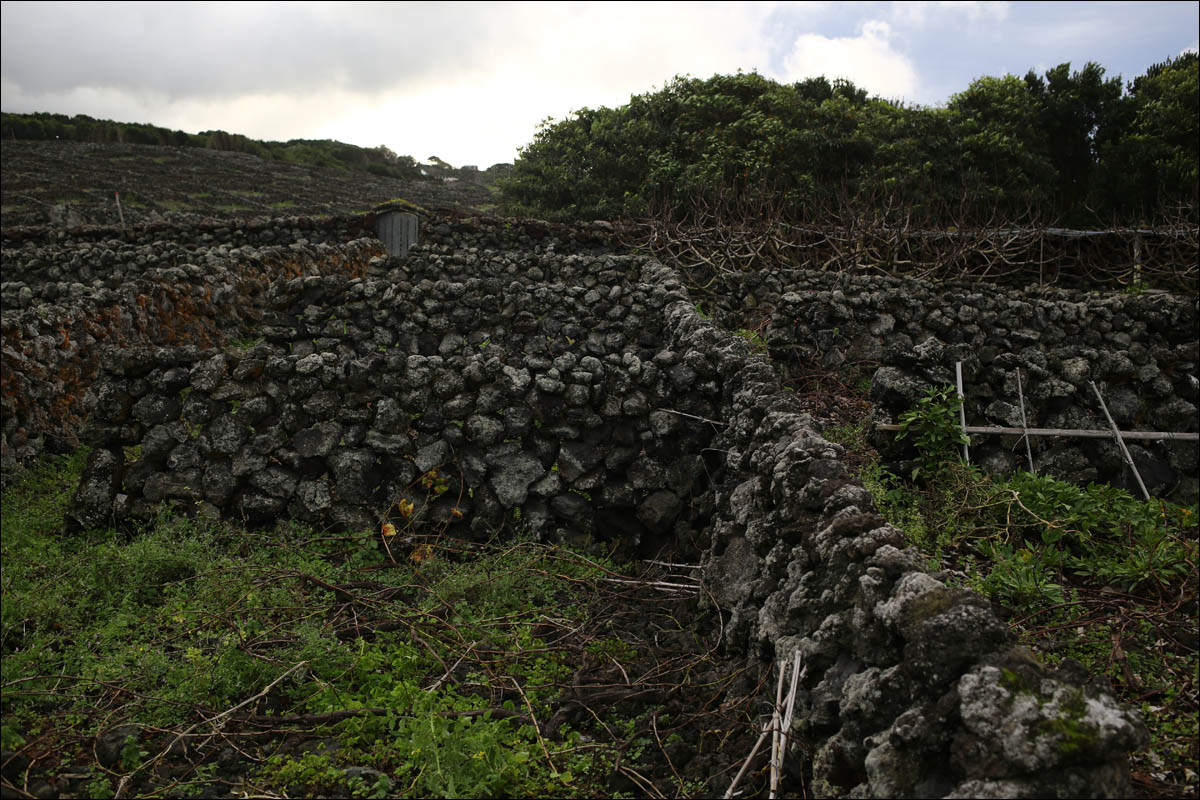
This is now modern farmers do with concrete. Weaklings. With concrete, everyone can. And then they put a straight figure to the figure, and they had no straight lines. So the characteristic divided fields turned out. They can be quite large, and very small, under the grapes.
These are not different fields of different people, but simply borders between sites. For example, you can convert cows from square to square while grass grows in other areas. By the way, cows do not need houses. It is warm here all year round, so they sleep right in these fields. And they are milking them right in these fields. True, it is now a special milking machine.
And here bananas were planted next to the corn:

But bananas do not like the wind, so they are usually surrounded by some higher biotech of the Middle Ages, through which neighboring boys and cows cannot sneak. On islands where there is less stone, different shrubs (up to aloe) are used to delimit the fields.
The capitalthe Portuguese chose Angra (it will be called so later), a city at the foot of the mountain of Brazil, in fact - an extinct volcano. The bay behind the volcano was protected from the three most frequent winds, and the Portuguese still poured in the breakwater and defended themselves from rare winds from the fourth side.
And they built the fortress of Angra, which perfectly swept the entire bay. Now in this old castle made the hotel, right in the walls. The rooms are lined with wood, and there is a heating system based on ventilation (it’s damn important because there’s no central heating anywhere, and it’s cold in the castle).

Then, much later, the island was captured by the Spaniards. Not from the first, by the way, because before that they had tried to disembark along the shore, but the farmers came up with the coolest life hacking: they took all the cattle, took them up the hill, then broke up and released them to the Spaniards. It seems like they even tied something burning to animals. In general, yes, biotechnologies were used here creatively and with a twinkle.
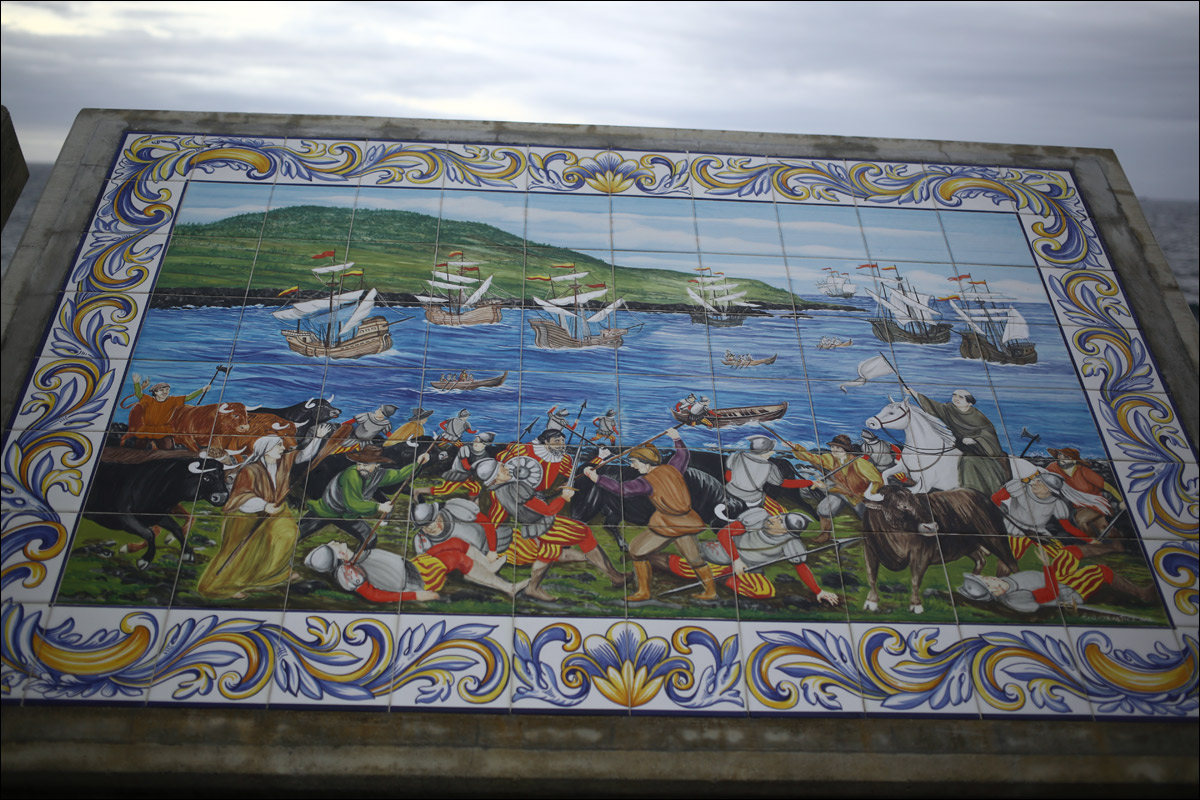
The Spaniards took and surrounded the fort almost all the mountain of Brazil. Because that old castle was unable to properly protect Angra. They spent a lot of resources, built it all, supplied them with guns - and fell before the Portuguese, who took the island back.

The castle-fort of the Portuguese - this is the little dark spot on the right-top.
Now in the Spanish fortress military unit. It seems like the oldest military unit in the world, which works without a break. About 500 years.
Interestingly, the third island was called Brazil first. But the colonists did not suffer from a rich imagination and poetic thinking, so it was difficult for them to pronounce. Therefore, the island was called the Third. Since then, he is Terceira. And then Brazil called another place.

The multi-level city of Angra do Heroismo - or simply Angra - was founded in 1478. Before that there were villages here. The first houses were built too far from the ocean, then they began to be built directly from the quays. When the tsunami walked through the city (this is the one that, together with the earthquake, reduced the population of Lisbon by a third) - it demolished the stone arch of the gate to the city and municipality.
Biome Features
Here comes the Gulf Stream, so the temperature of the ocean is from 16 to 25 degrees Celsius, depending on the season. In one place is +55, but this is a unique lagoon.

Actually, an endemic bullfinch.
The most profitable option for farming was breeding cows. Cows compare favorably with goats and sheep in that they do not turn pastures into desert. But still, because of agriculture, forests were thoroughly so knocked down on the one hand, and many invasive species were brought in on the other.
For example, there are whole forests of Japanese cedar (in fact, it is not cedar, but cryptomeria, and the Chinese name Shan or Japanese Sugi very accurately describes a tree. Very precisely - because it is the same pair of hieroglyphs, 杉). UPD: pakager corrects that this is one hieroglyph and two radicals.
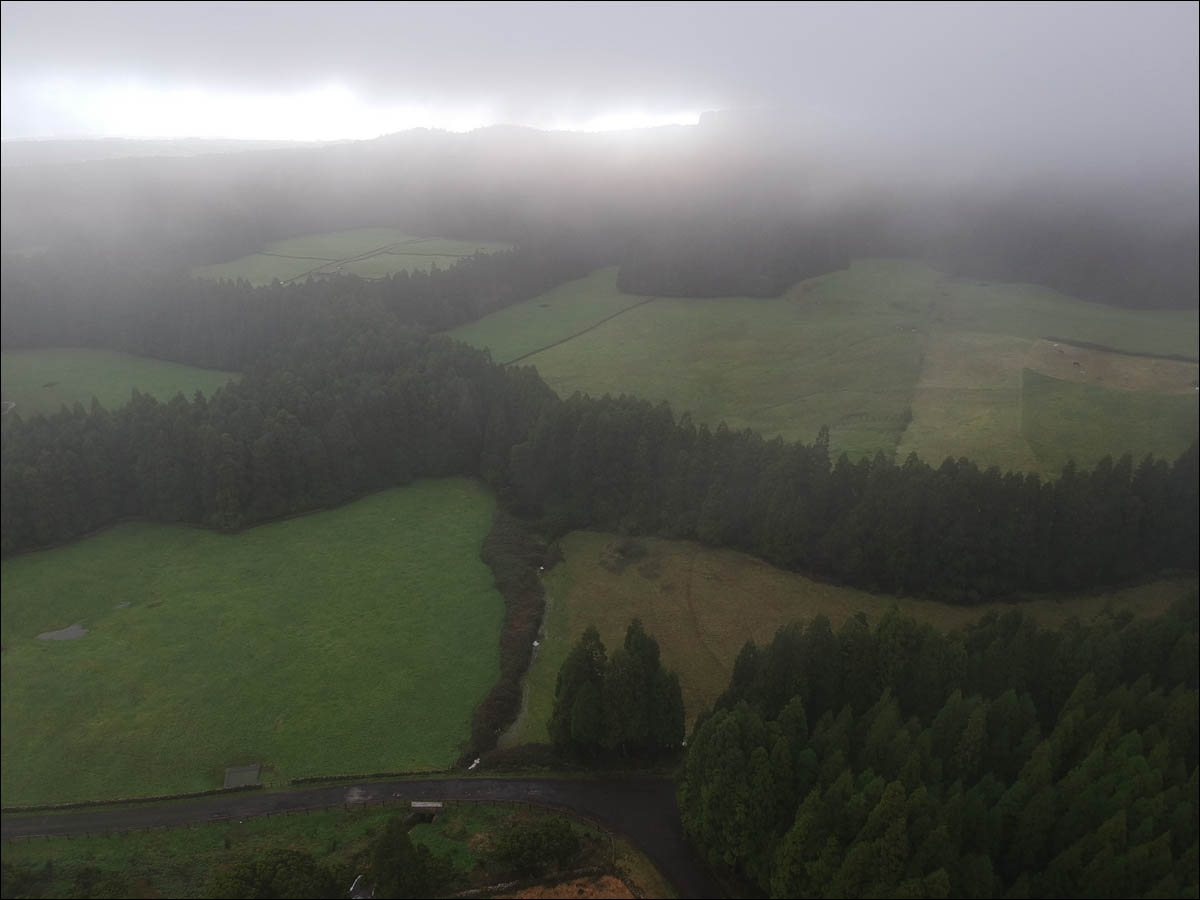
It makes an excellent field windscreen. But he is loved here for a special resistance to moisture. He quickly became boxes for exporting oranges, fishing boats, pineapple boxes and furniture.
There is a “ginger lily” (Hedychium gardnerianum) - there are more of them here than in the Himalayas, where they come from:

There is a metrosederos from New Zealand, he feels awesome here. In New Zealand, it blooms in summer, that is, exactly for the new year. Because spring is in the other hemisphere in winter. There he is instead of a tree. And here he is instead of a tree.

Birds fly here when flying (and some nest in lava and hatch chicks). For them, this is the oldest recreation area when crossing the ocean.
This is what a regular aloe grows in this paradise for flora:
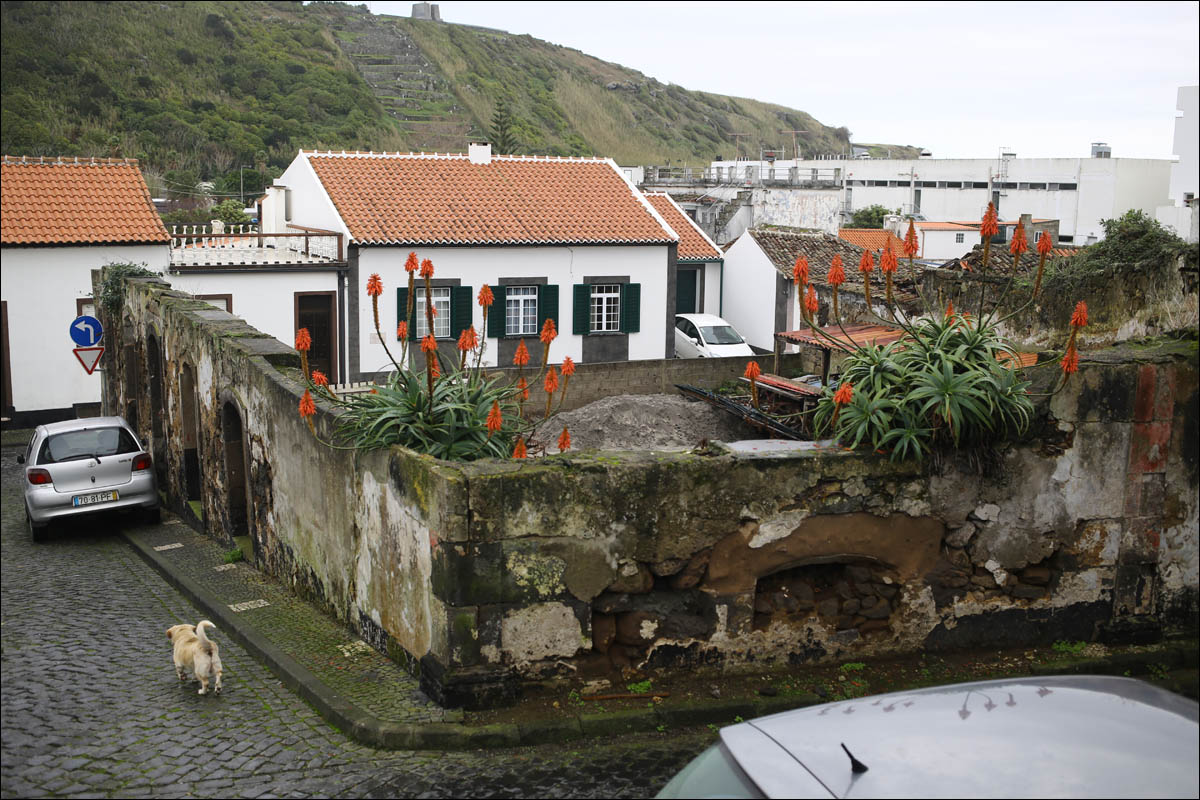
Aha, these orange panicles are aloe flowers
And this is Doryanthes excelsa from Australia. He really excelsa, this instance of the meter has risen by two and a half:
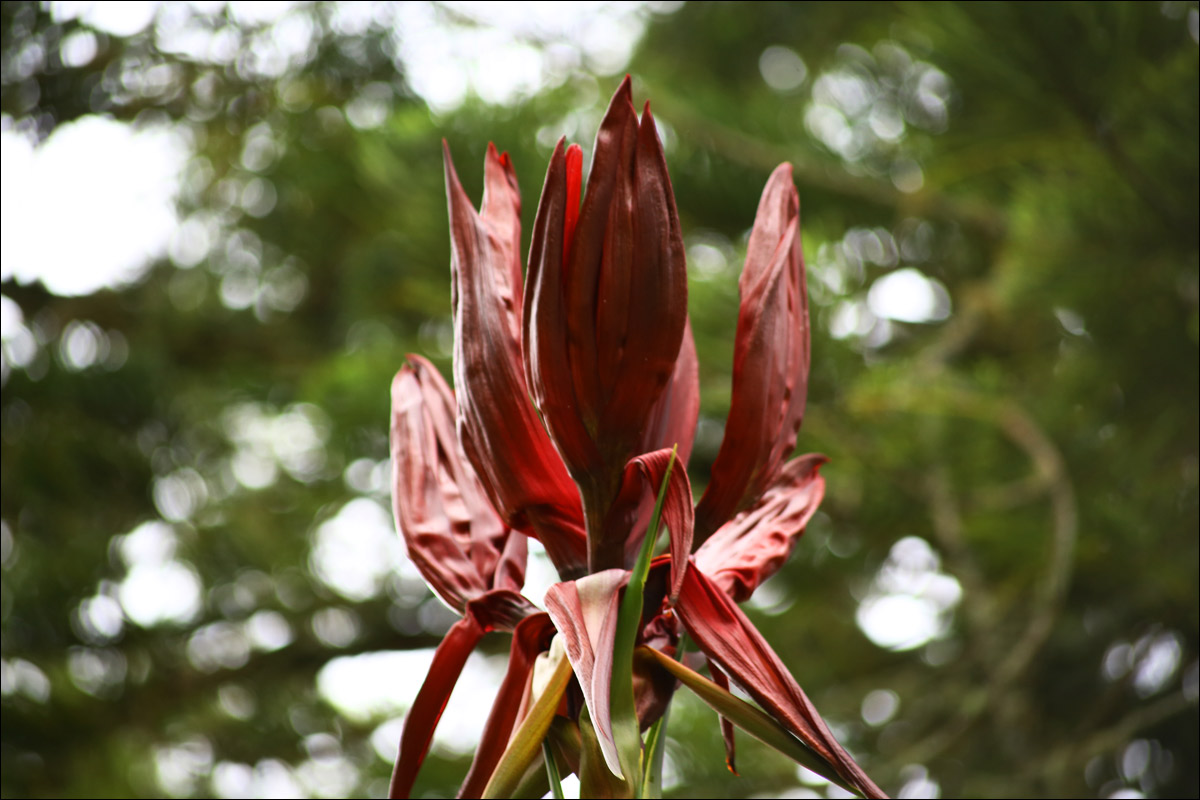
Bats are not afraid of anyone, so they fly during the day and live in hollows about a meter high. But this is generally a magical story:

In the picture, none other than Ilex perado. We call it holly. Because he has pretty healthy sharp spikes, which he fun sticks to anyone who wants to pick fruit. See these spikes? And they are not. It turns out that they are not really needed here.

Pneumatics, more characteristic of biomes such as mangrove forests.

If this panicle grows to the ground, you get an additional tree.
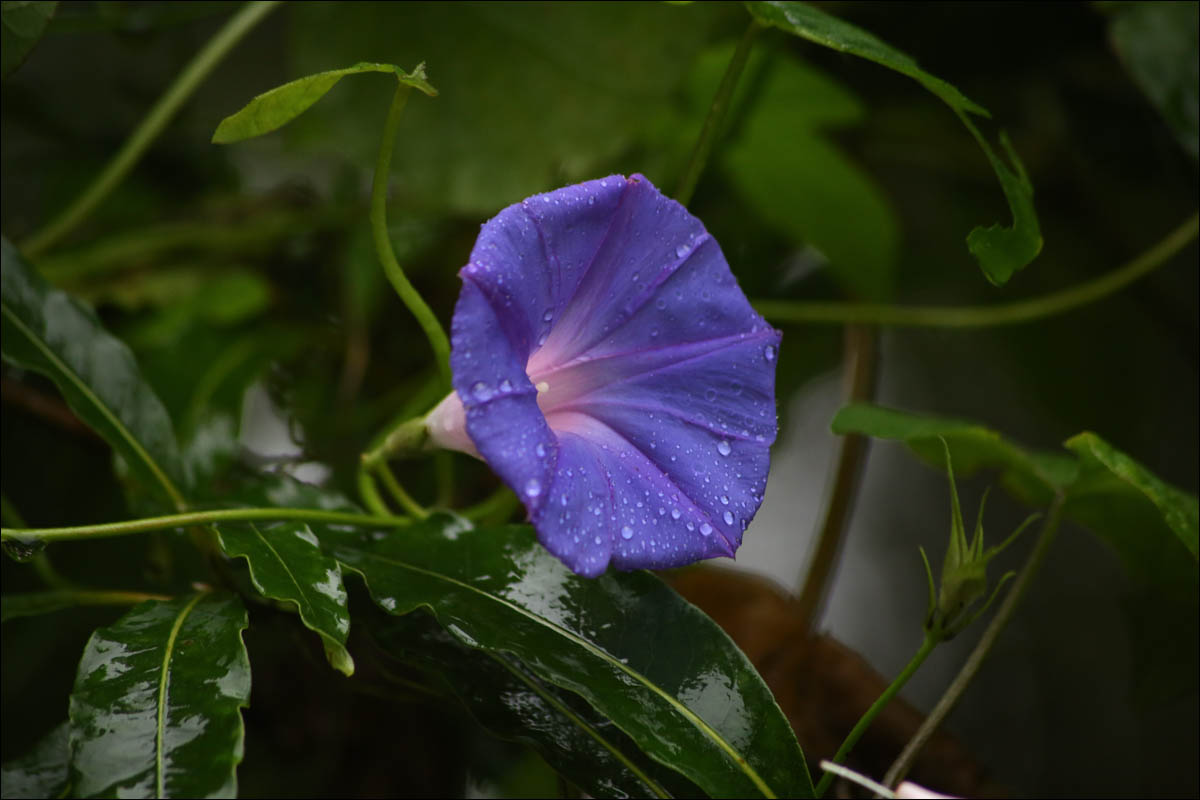
And this is “our” Ipomoea, Erica azorica bindweed
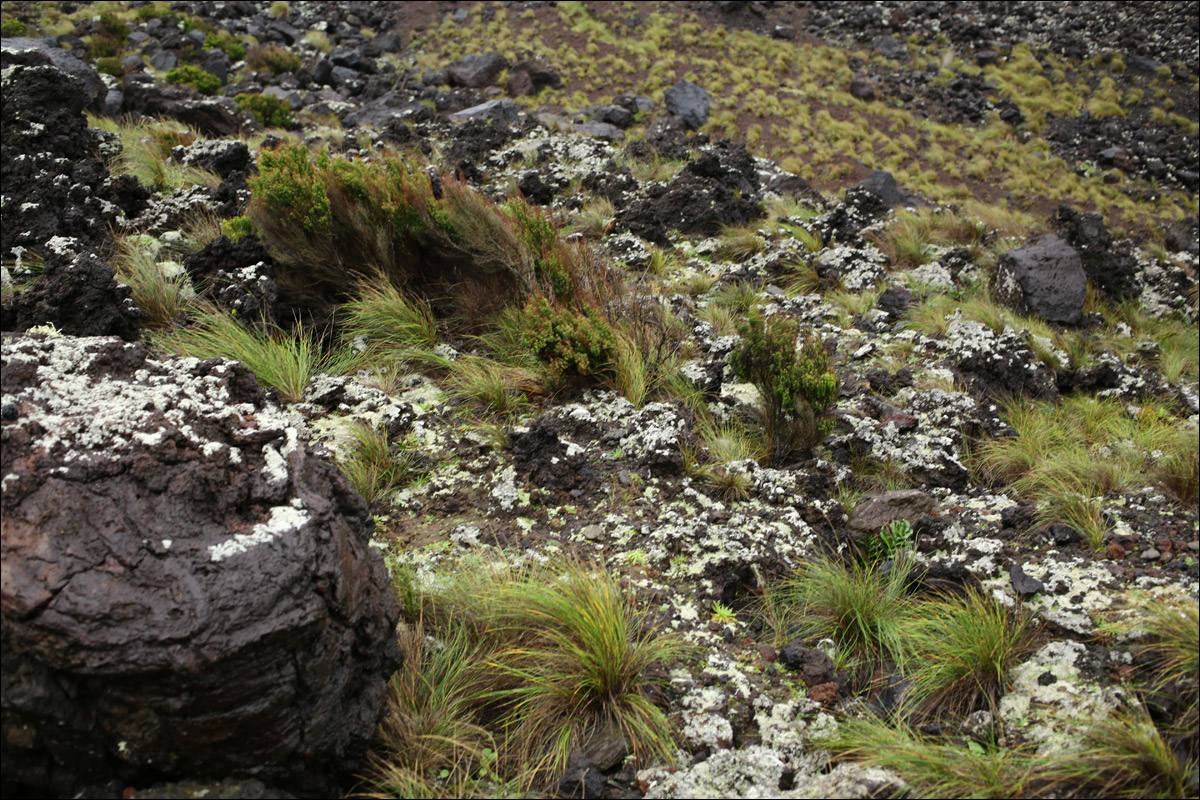
, endemic. Here she is on the coast. But it generally looks almost like a tree.

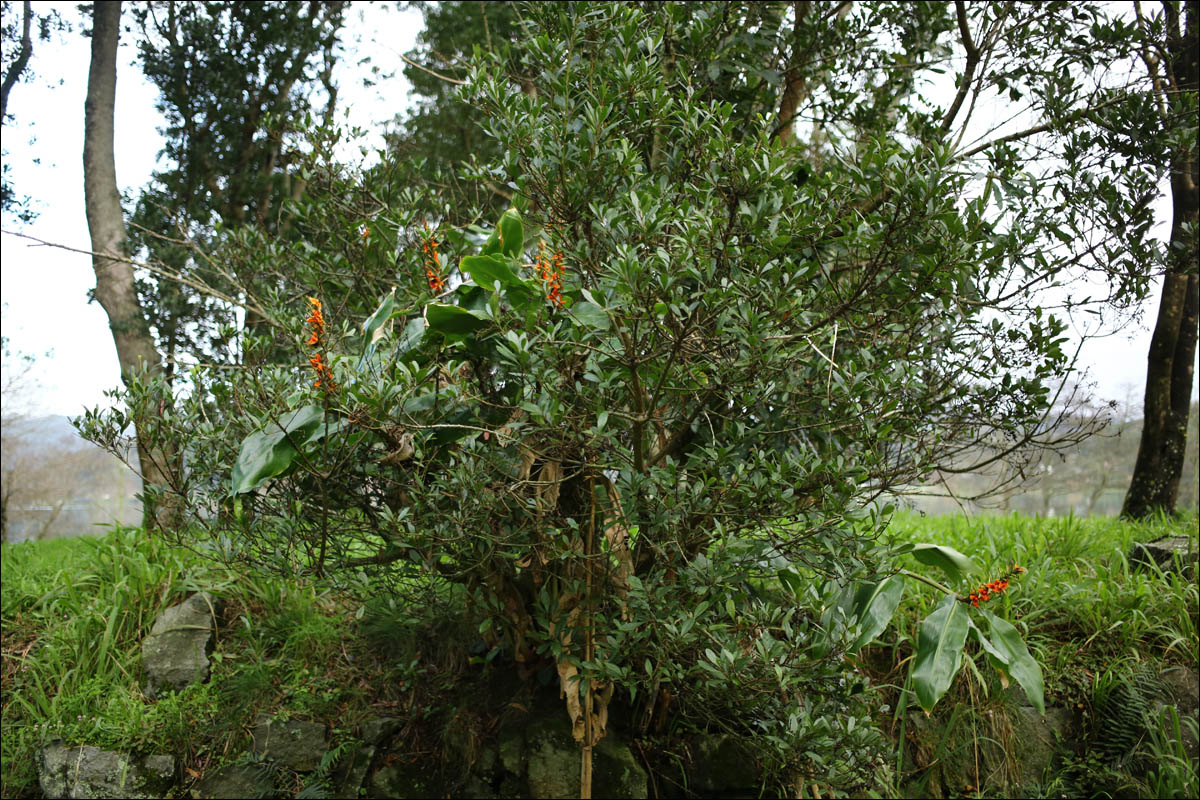
And this is a mutafruit from Fallout: Soursop

apple, a relative of cherimoya, which can sometimes be found in grocery in Moscow. The main thing is not to bite her seeds, there are neurotoxins. In our grocery about it do not warn.
Surprisingly, with all this biodiversity, almost everything was done without conflict. Almost - because there are rabbits, a Japanese beetle and these ginger gedihiums.
With the rabbits, the episode came out short but bright. Having seen enough of the Australian adventures with attempts at lime, first rabbits, and then foxes, which began to eat everything, including at the same time rabbits, the local decided to solve it easier. Just shoot from guns. In general, even for the most part happened. Livestock under control.
Here, for example, endemics are planted here, and pipes are needed so that the rabbits that survived the St. Bartholomew night did not eat them:
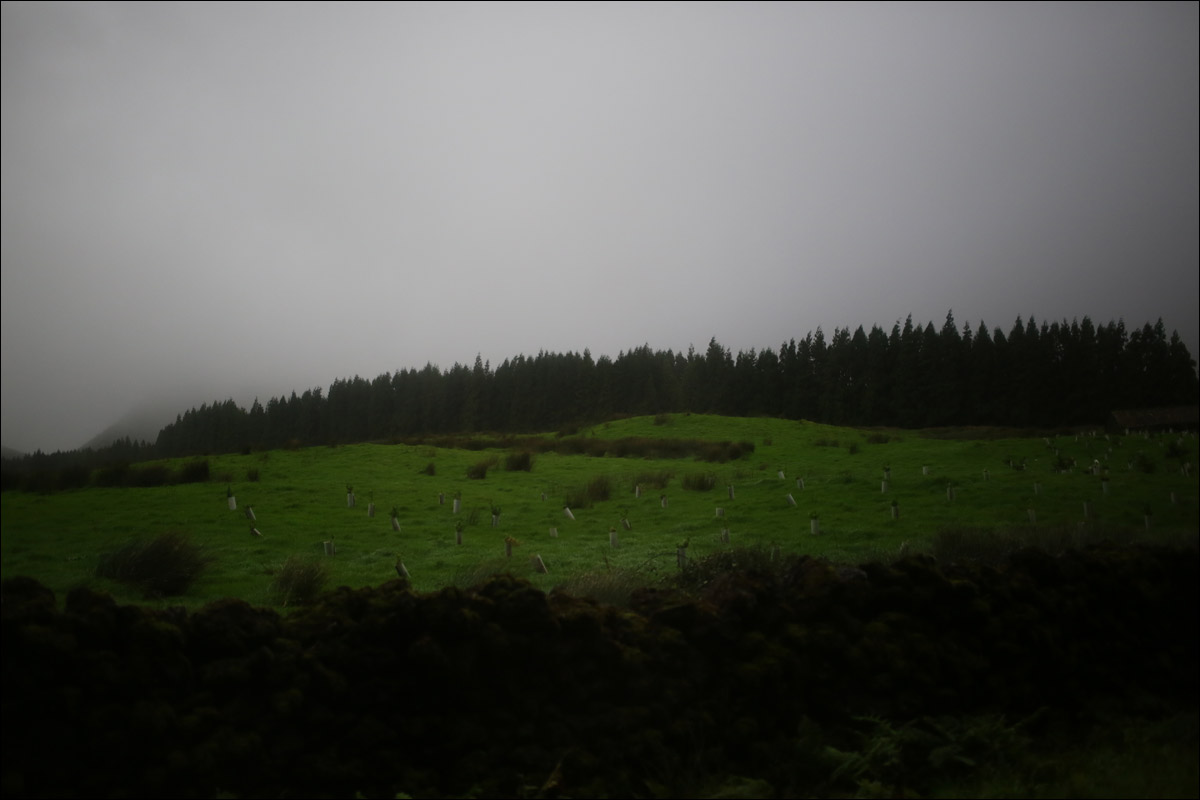
And the Japanese beetle (it looks like Popillia quadriguttata japonica, got here with soil or plants) - just at some moment go out and smear everything around with the means of it. It is assumed that if this is repeated for many years in a row, then it will have nowhere to breed, and it will die. They say that if this is not done, the beetle will eat everything cleaned up here.
Now Ginger, which hails from the Himalayas. The problem is this: he, the infection, is very tenacious. Almost like a hogweed with us. Just snatching is not enough, you need to get the whole root out. And there is quite a lot of it. And they quickly capture the beachhead. Karina costa, the bioengineer of the ark of Florache valley flora showed me a tree with Canar in the gardens of Terra Nostra:
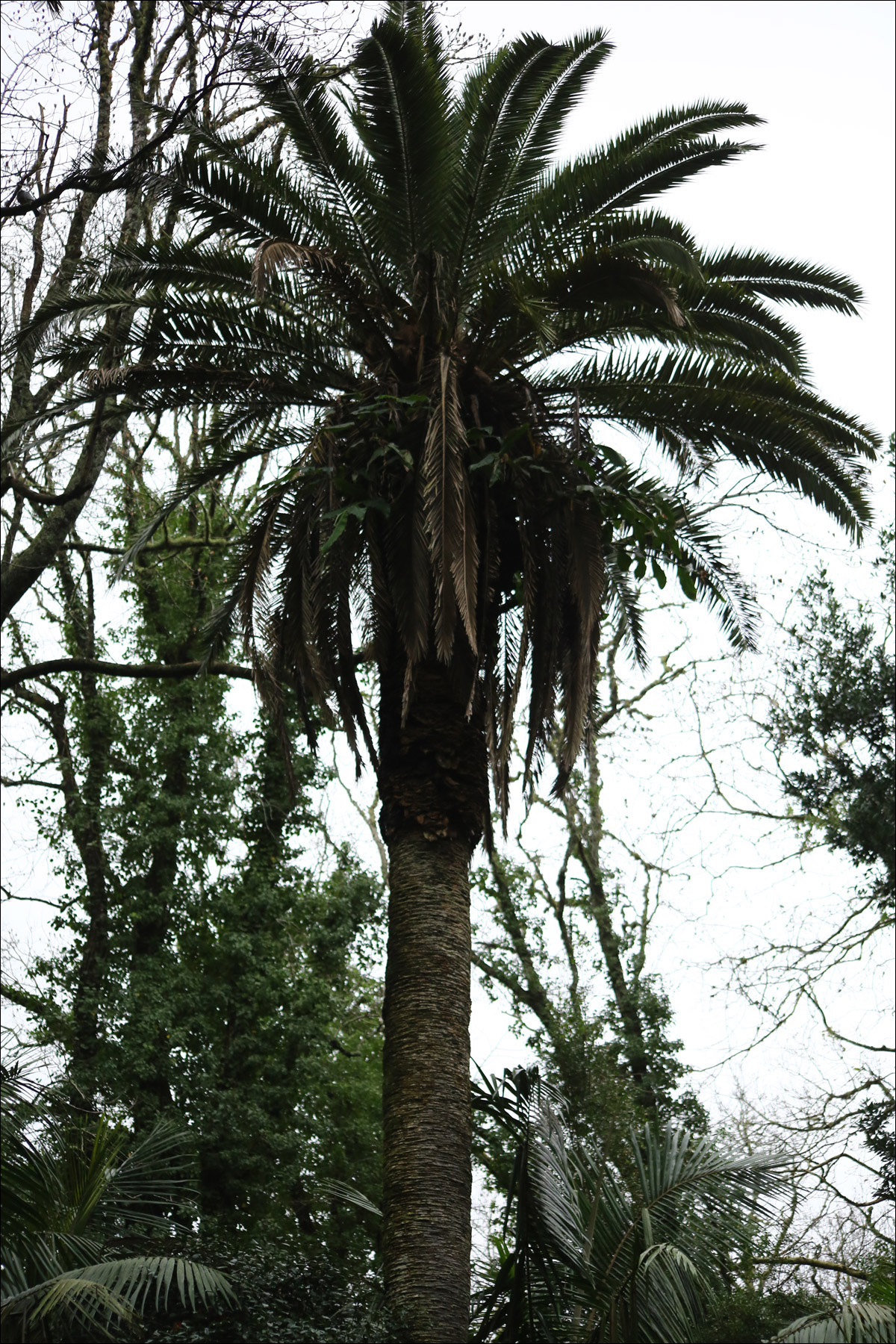
Do you see who is waving crown sheets at us? These are freaking gedihiums growing on rotting leaves stuck in the bases of the branches. Or, look at this young escape, sending us greetings:

And here is another tree growing right from a branch of another tree:

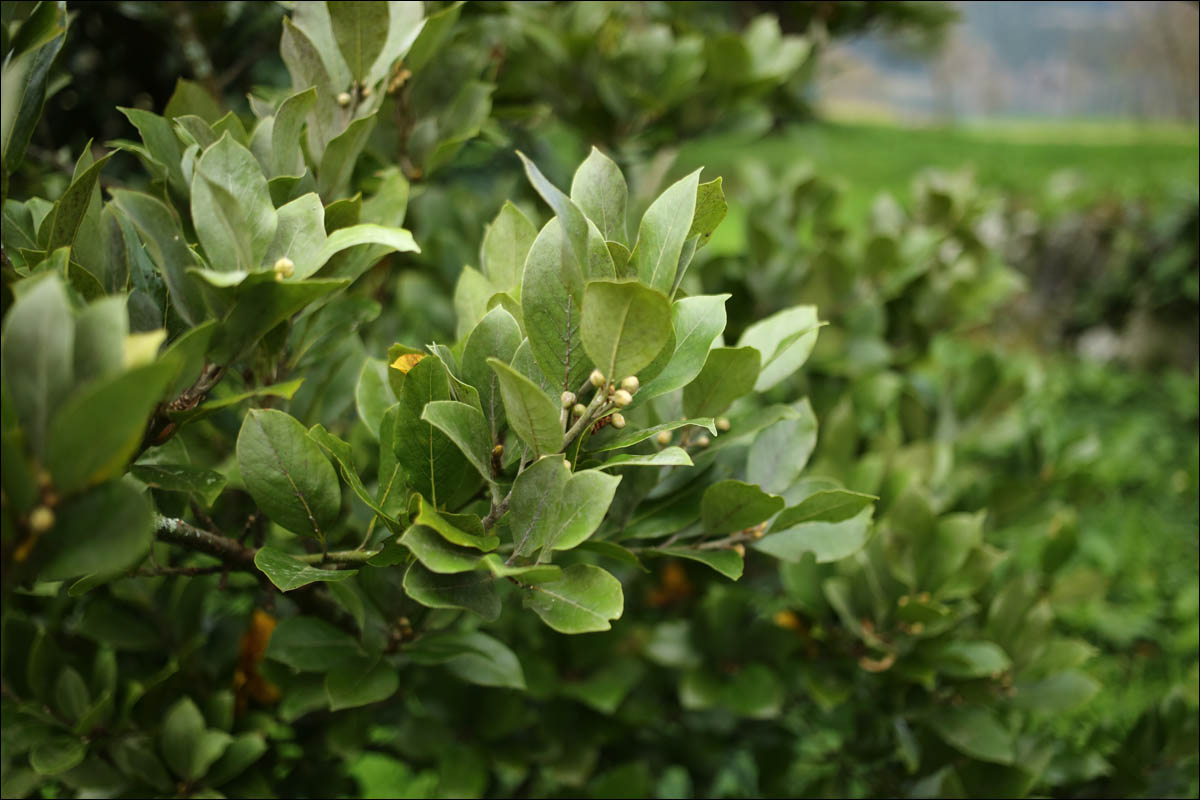
And this is a bay leaf. Not quite normal, this is Laurus azorica, a local endemic.
It seems like pittosporum (supported by bananas) also threatens to unbalance the ecosystem, but it is not yet clear.
More local birds came into conflict with the crops. They see how people scatter grain when sowing, and they come to eat it. While there is such a life hack: Azorians clean up at home and find a video cassette with Rembo. It is possible with the Terminator, it is even better. Take out the film and wound on sticks. The film is noisy, and while Chernoptitsa are afraid of the analog Schwarzenegger, the grain quickly germinates.
The climate is gradually changing: earlier olives could grow here, now they can no longer, just like apples. Because they need winter in the cycle, but they don’t.

See, there are no cherries and apples. They are brought, and are expensive.
In general, fun. And very beautiful.

The archipelago supplied almost all of Europe with oranges in the middle of the nineteenth century. At the same time, the area of the islands is only 2.3 thousand square kilometers (this is 2.6% of the territory of Portugal). Therefore, oranges grew a lot, and they were selective. And then we see a typical selection turn. When you have many similar oranges with the same genotype, the very first epidemic can easily kill them. That is exactly what happened: a change in the weather plus something infectious (there are no exact details now, what exactly, but judging by the fragmentary tales of the locals, it is not a disease) that killed all the island oranges. In general, everything under zero. It took 15 years to recover, because the orange garden begins to bear fruit in a combat mode in 10 years only. During this time, the economy has experienced a couple of tragedies: families, who quickly began to grow pineapples in greenhouses, won dramatically. Because pineapple ripens 2 years, and this is less than 10.

Greenhouses paint white for the summer and wash off the paint for the winter.

A very textured Portuguese, pineapple plantation worker.
Perhaps the Terra Nostra corporation has had some respect for biology for about that time. And at least restored the collection of plants in the Valley of Furnas.

Firewood, these red berries
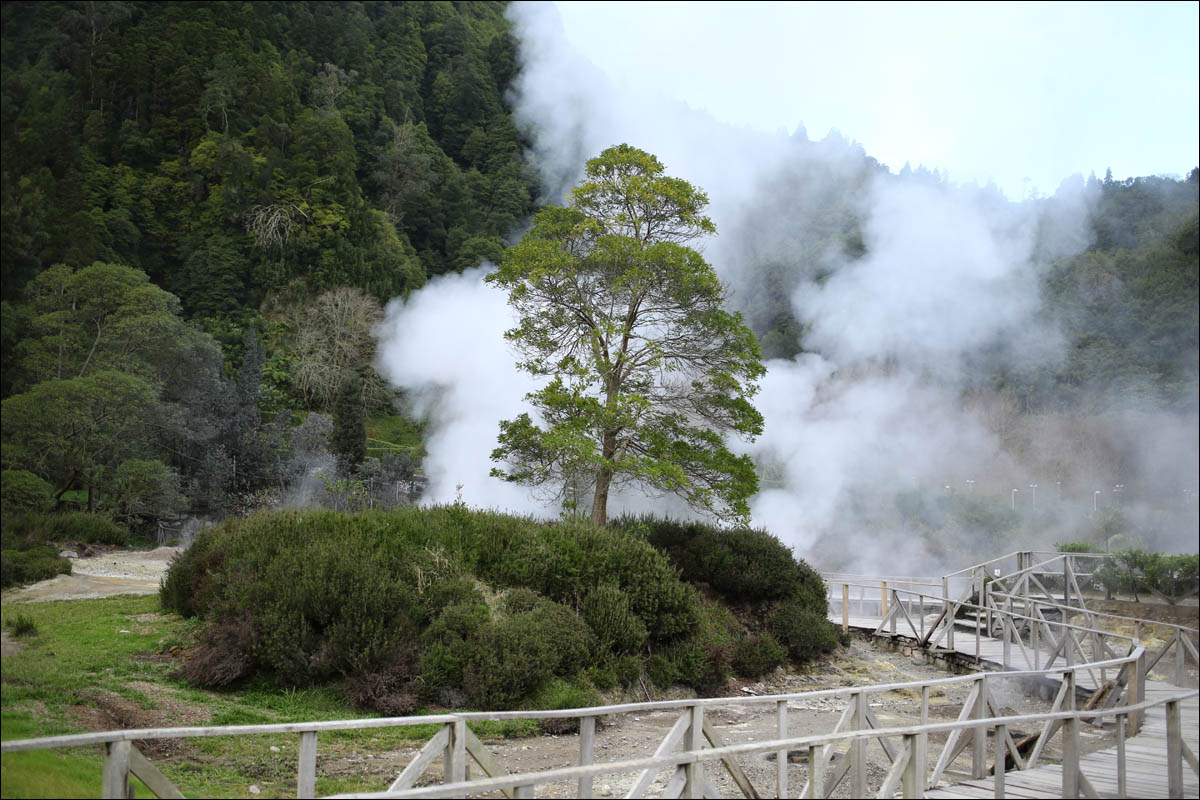
Acacia lives right on the geothermal source
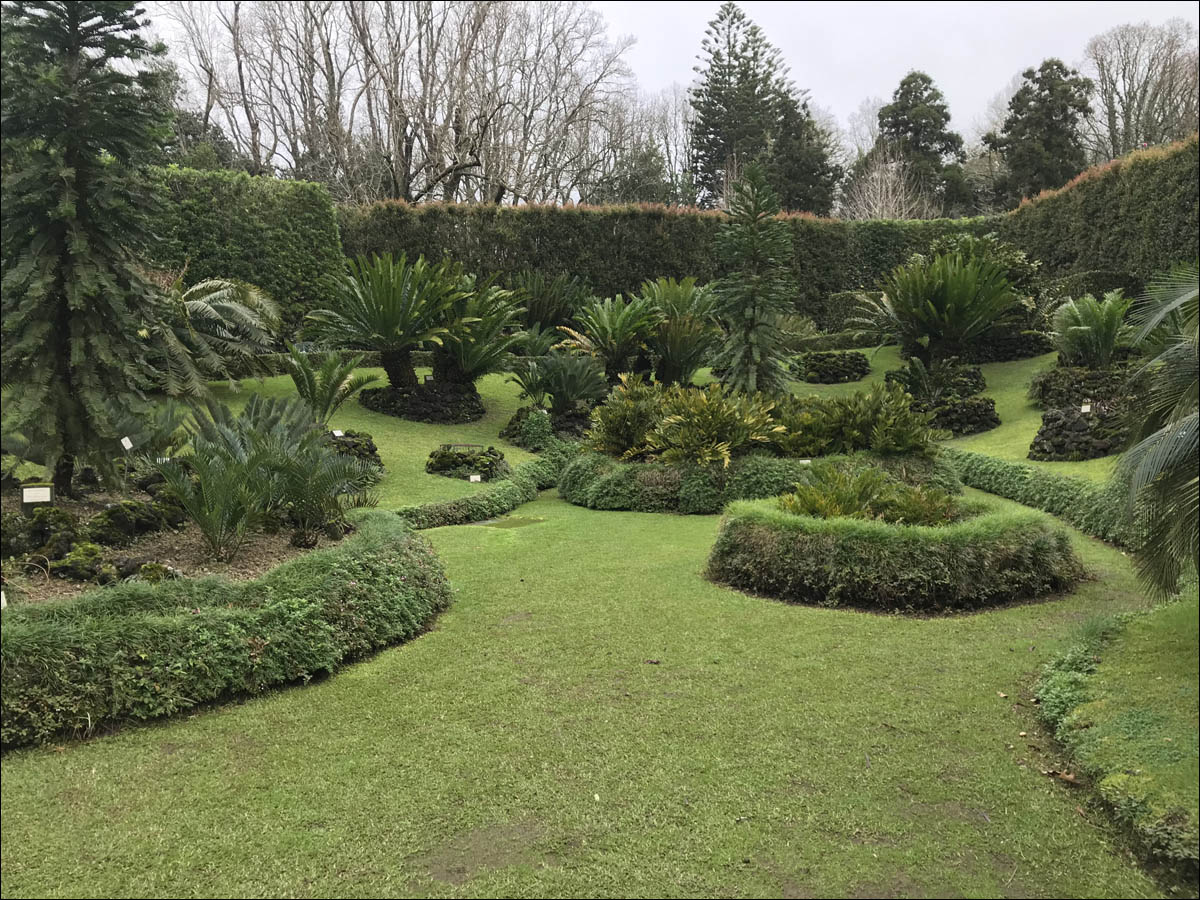
Bromeliads suffer from rain, so they made a separate wall and poured drainage.
Surprisingly, on no island I was put on the floor at the sight of dirty shoes and not even searched from head to foot on the subject of whether I brought some new exogenous garbage. That after the same Australia is a bit strange. There are also good biosecurity barriers in New Zealand, they just wash everything that looks like dust and earth. At your expense.
By the way, in the Azores there are zones for kebabs in the forests. But in each of them there is a special person from the municipality, who watches. Because already large arrays were burning in San Miguel in previous years. Despite the wild humidity.
Or here's the beautiful detail. The old airport is used as an experimental horticultural center - try different grass for cows. They call it “Aircow” - because there is still a small plane like a corncob, and before he sits down, you need to remove all the cows from the field.
Slides
Now one of the main types of business of the islands is tourism. The direction is very growing. In the summer from tourists not overflowed, but in the winter almost no one. But there are fogs and rains, which for some reason like only the Japanese, but the Japanese rarely get here.
In general, see what you can see:
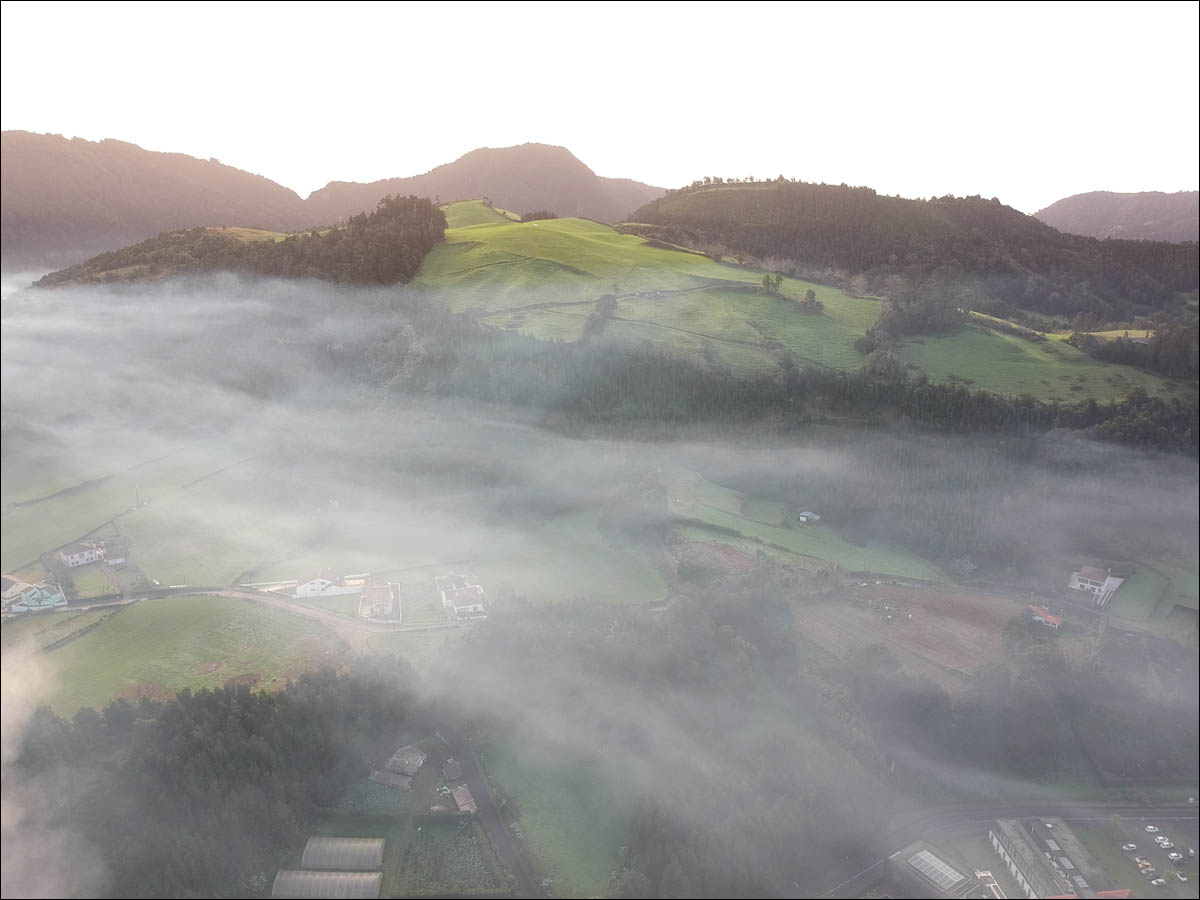
Furnash

View from inside the volcano crater. The lower you go down, the merrier and older the flora around.
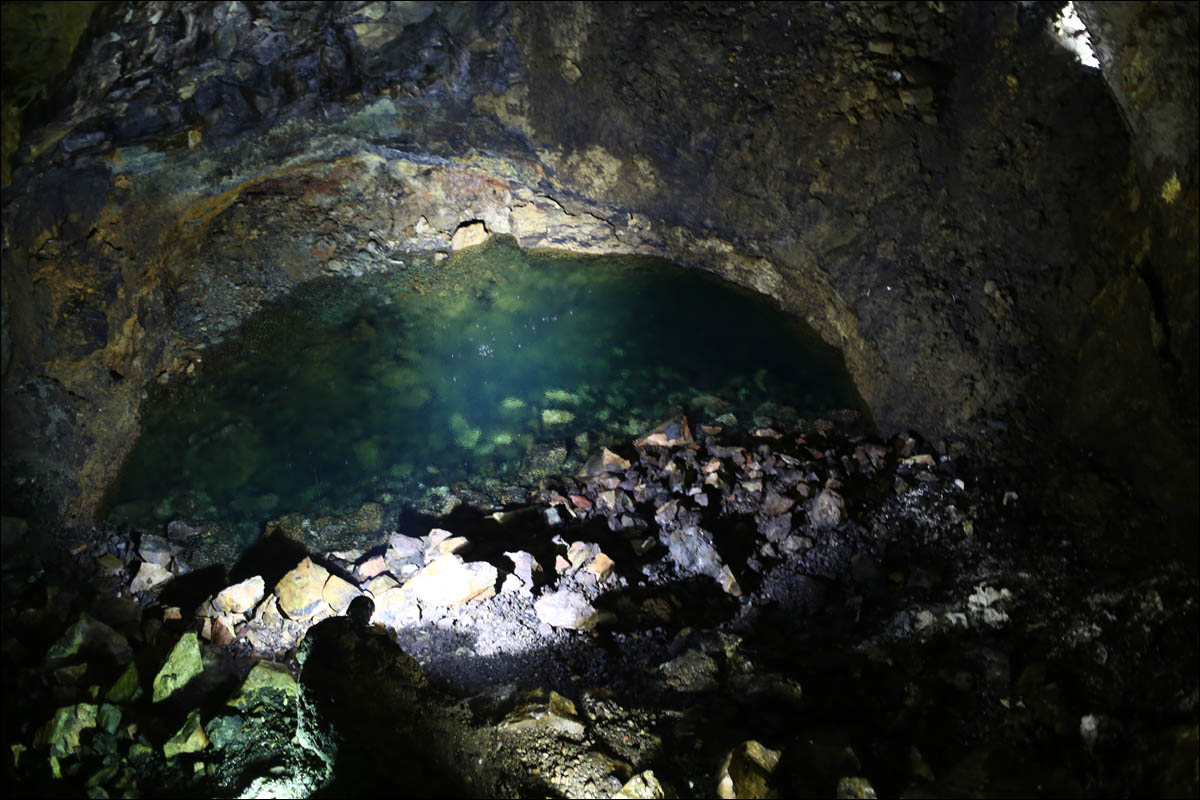
But the Grove of crooked trees on Mount Brazil dripped down below
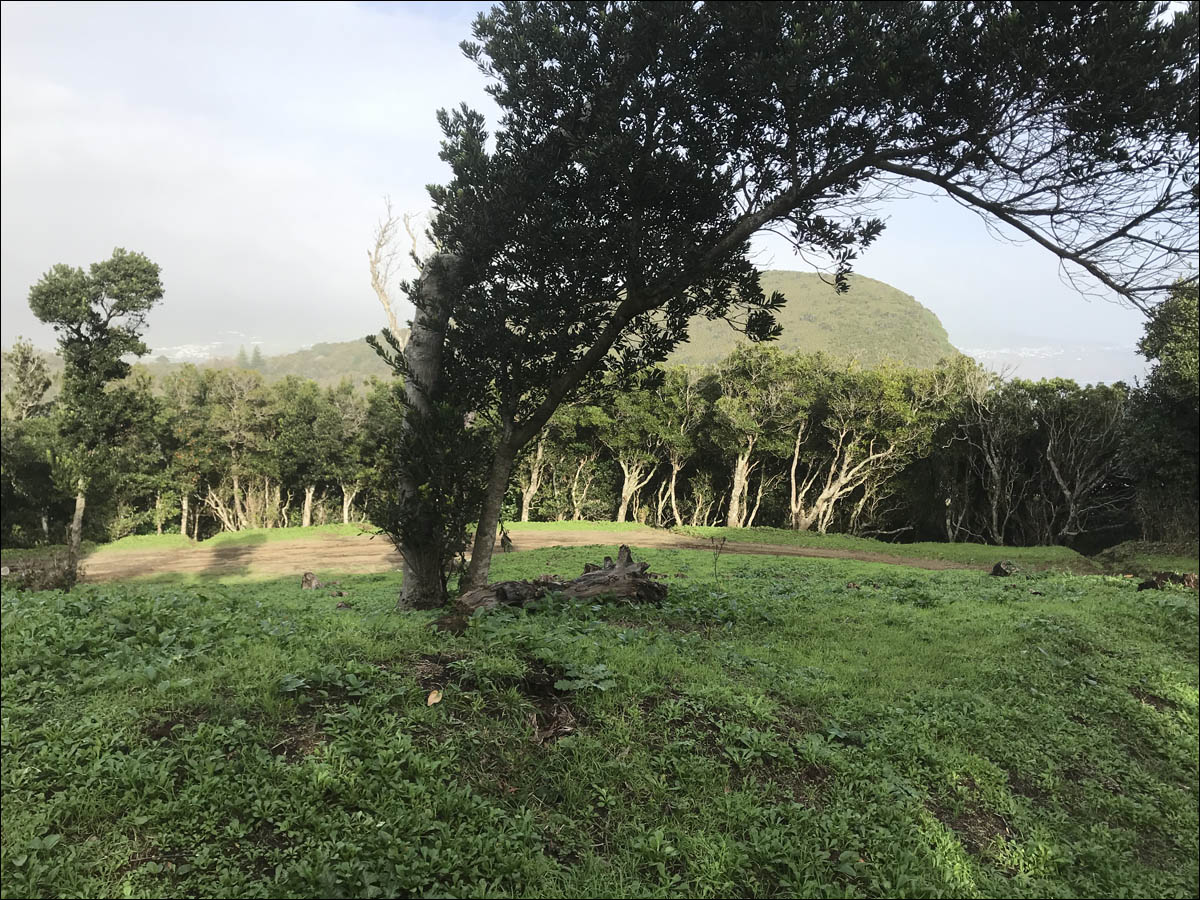
. By the way, this same wind does not allow insects to gain a foothold, therefore there is nothing unpleasant here, characteristic of subtropics rich in vegetation.
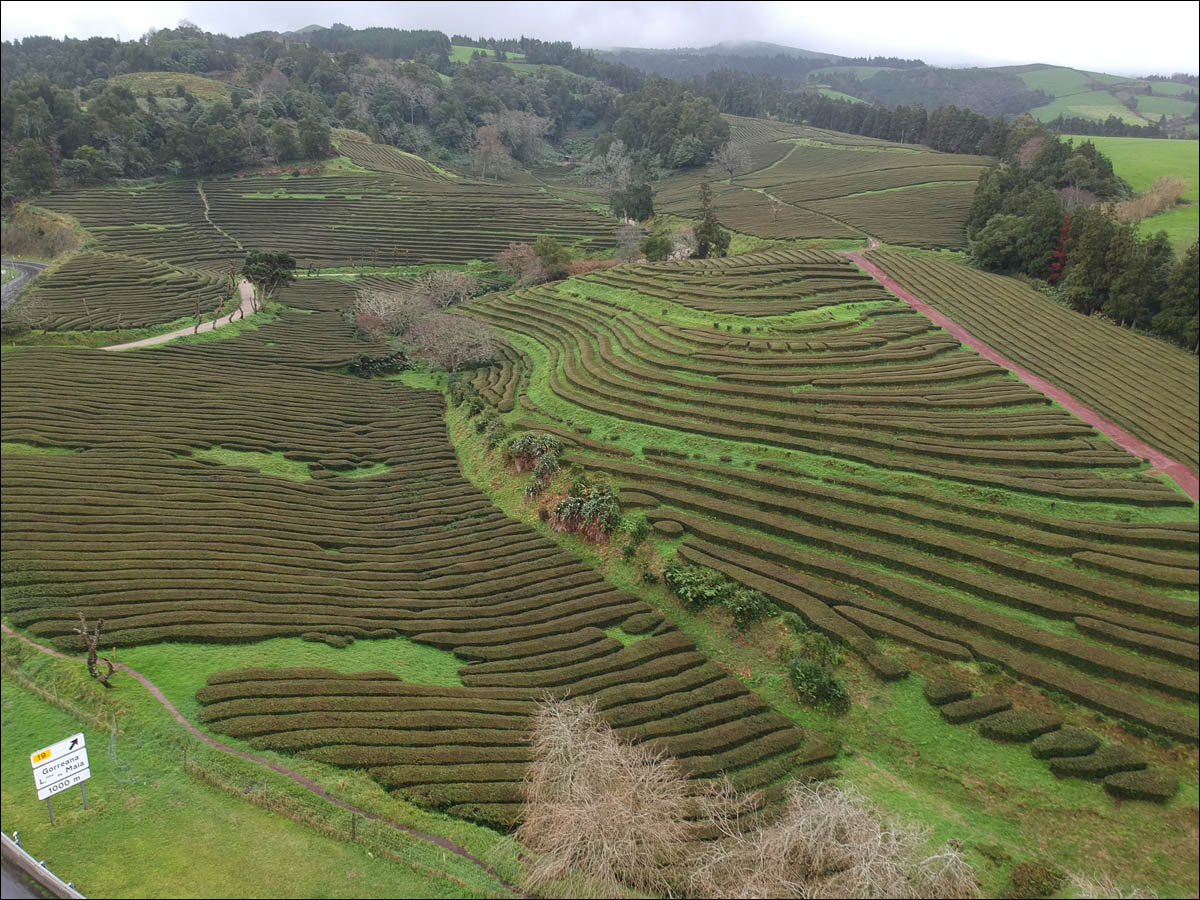
Tea began to grow on the Chinese technology. There is a section of the island in the north of San Miguel, there is perfect weather and there are no pests, fertilizers are not needed, because the volcanic soil is rich in minerals.
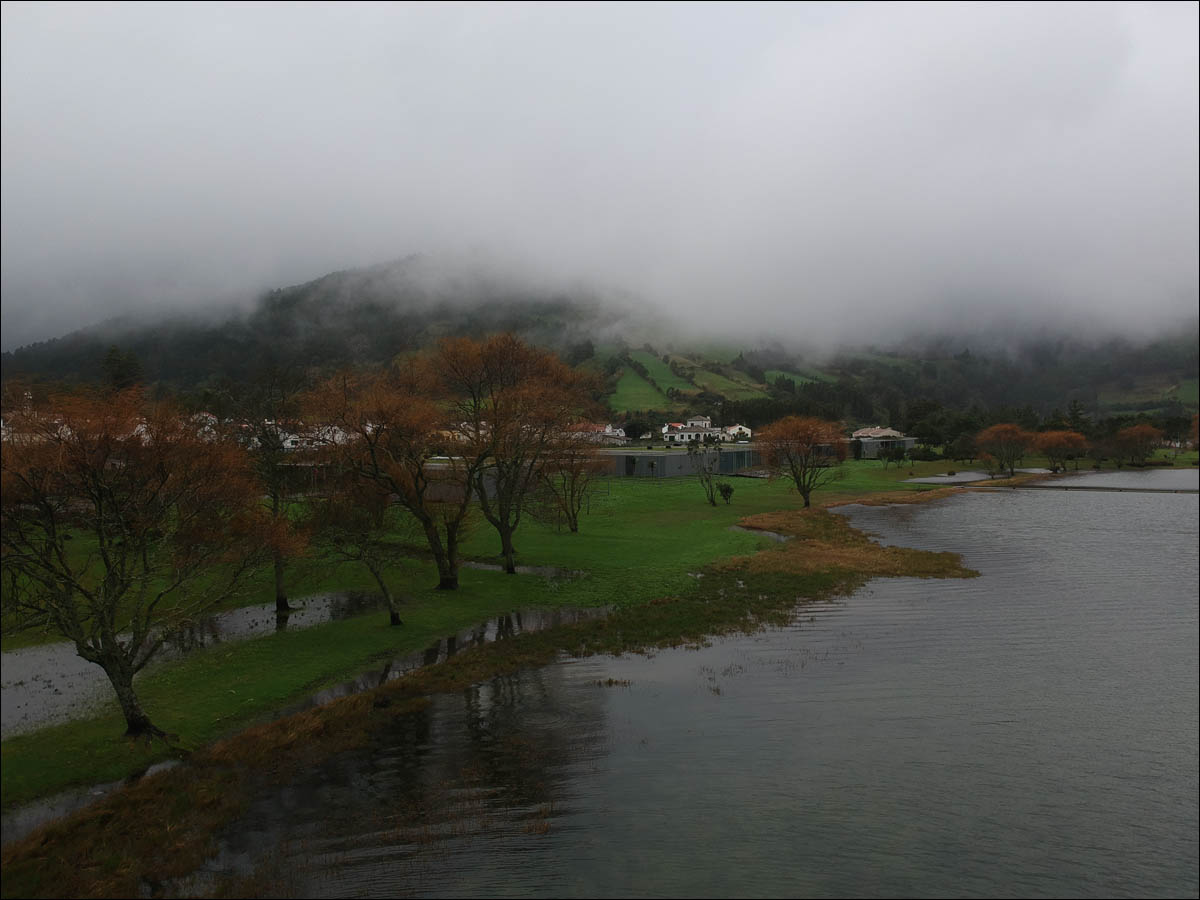
Something similar to our middle lane, but what - I can not justify.
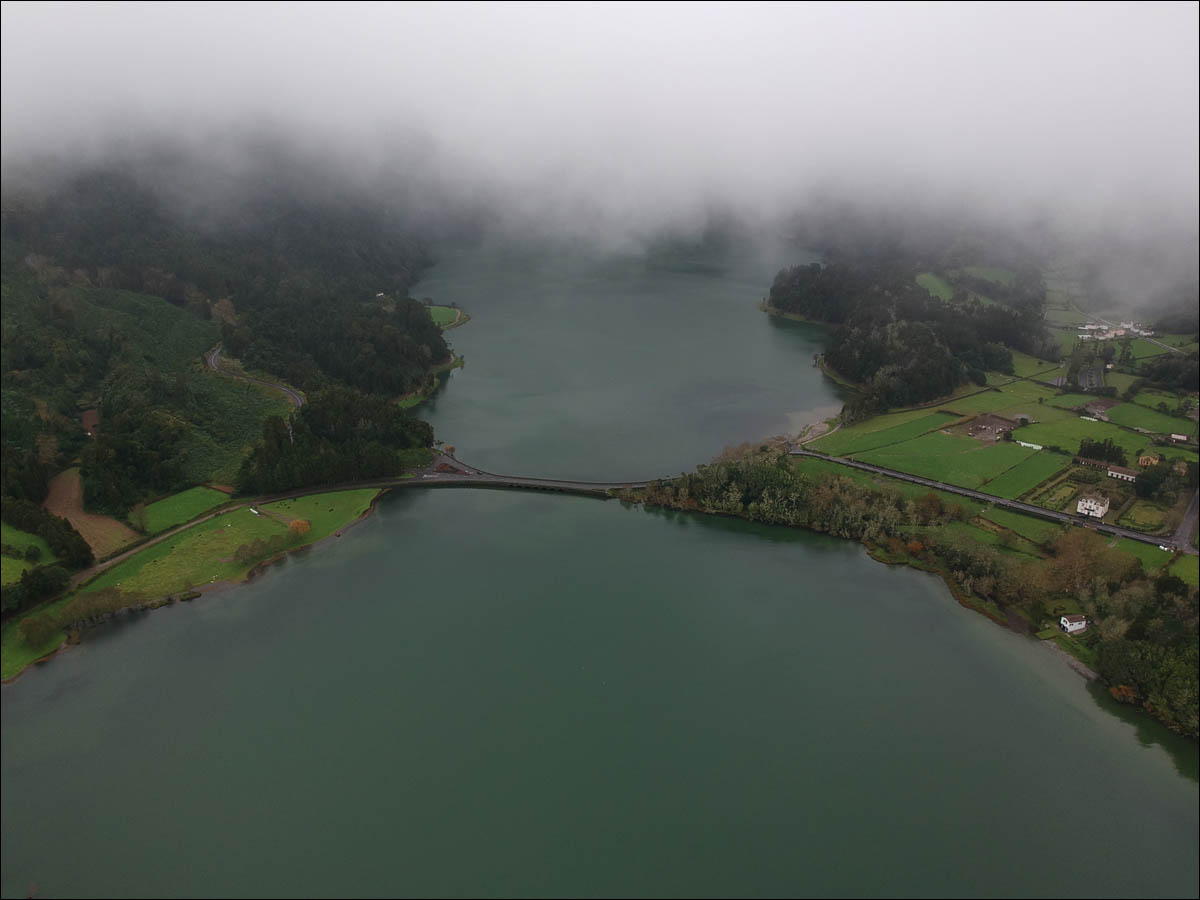
Lakes Blue and Green. Small green, it reflects only trees with a slope. Large blue, it reflects the sky. Once, after a couple of jolts, the lakes accumulated more water than usual, and the bridge collapsed. Therefore, they built a bridge.

Here are a
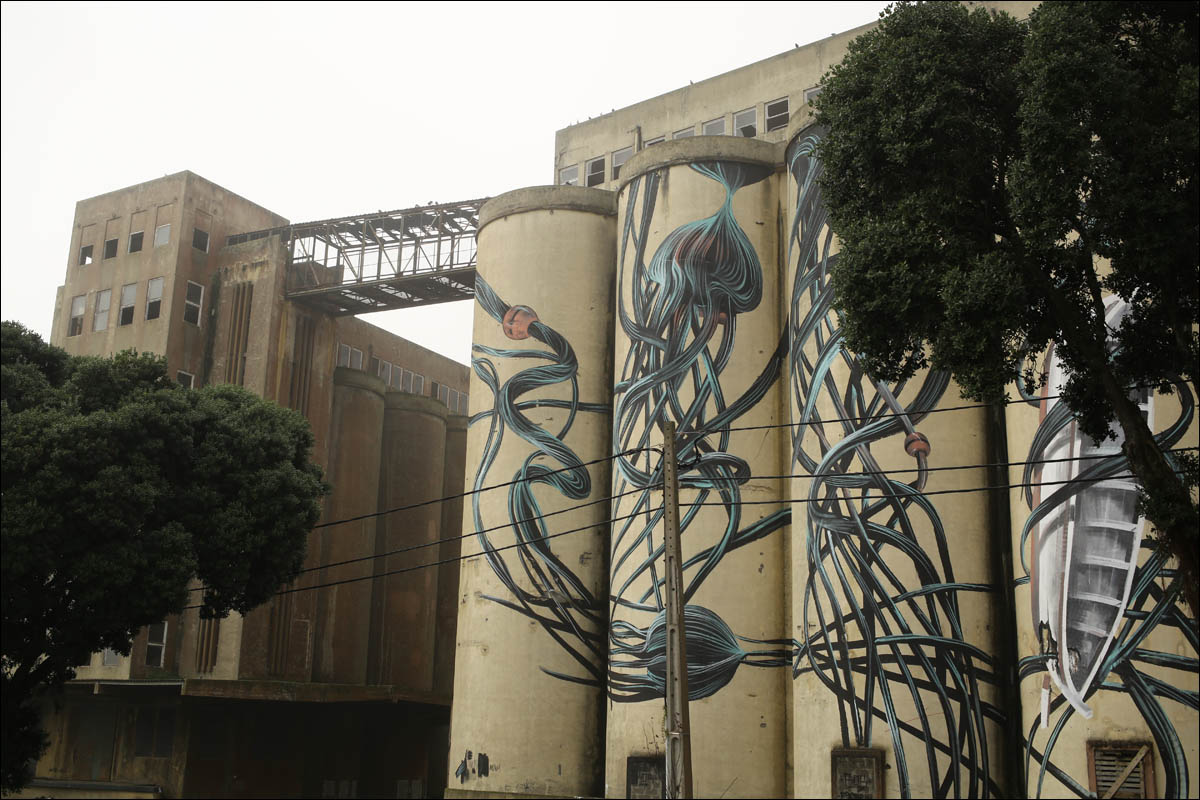
few industrial objects painted with bold graffiti to somehow fix the situation.

The mixture of architecture of three peoples and epochs. It is in Angra, here it is more Portuguese, so the doors in both Hobbiton and the attic.
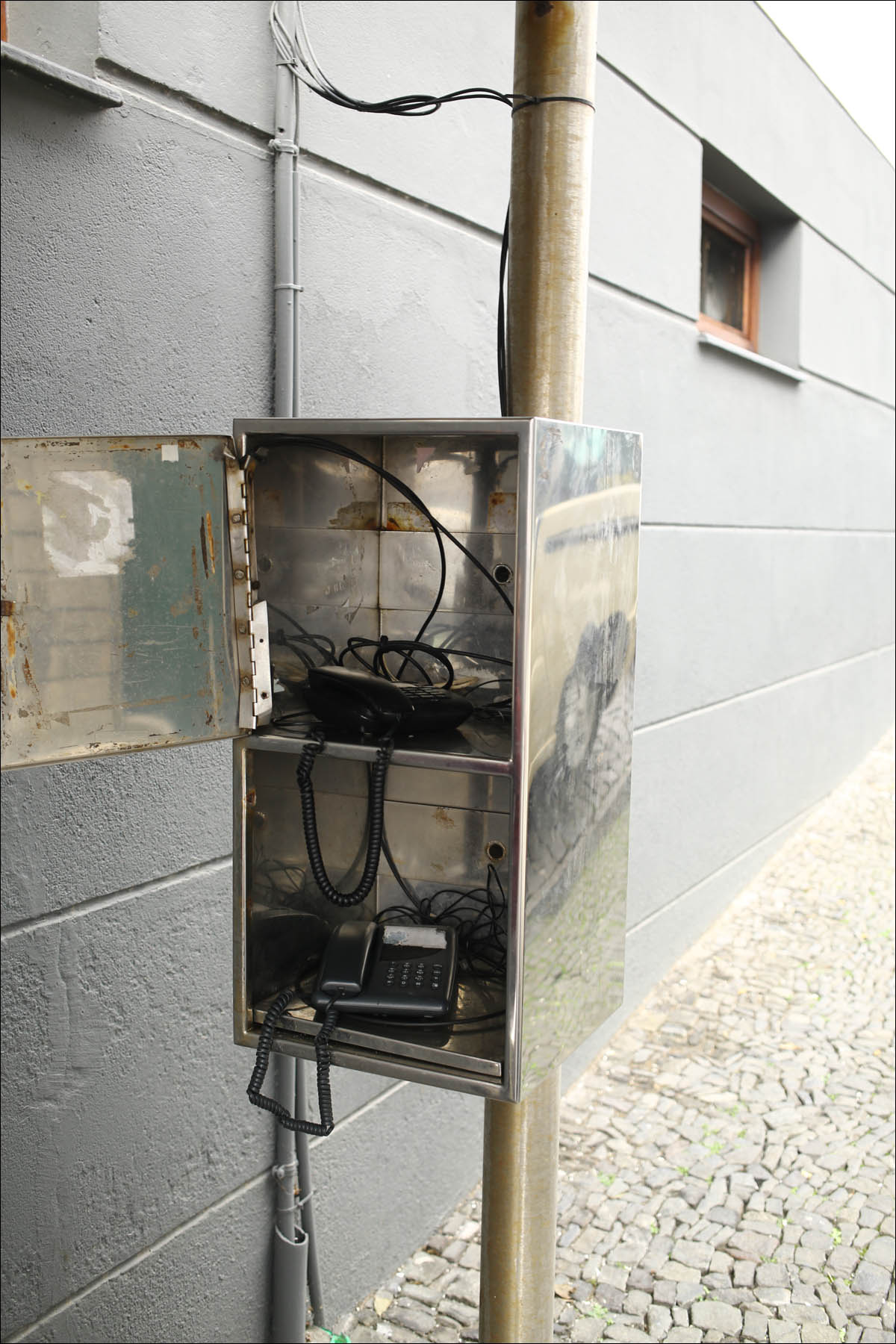
Telephone at the bus stop

Marina. Pay attention to the beach. On it is sand. It is a rarity.
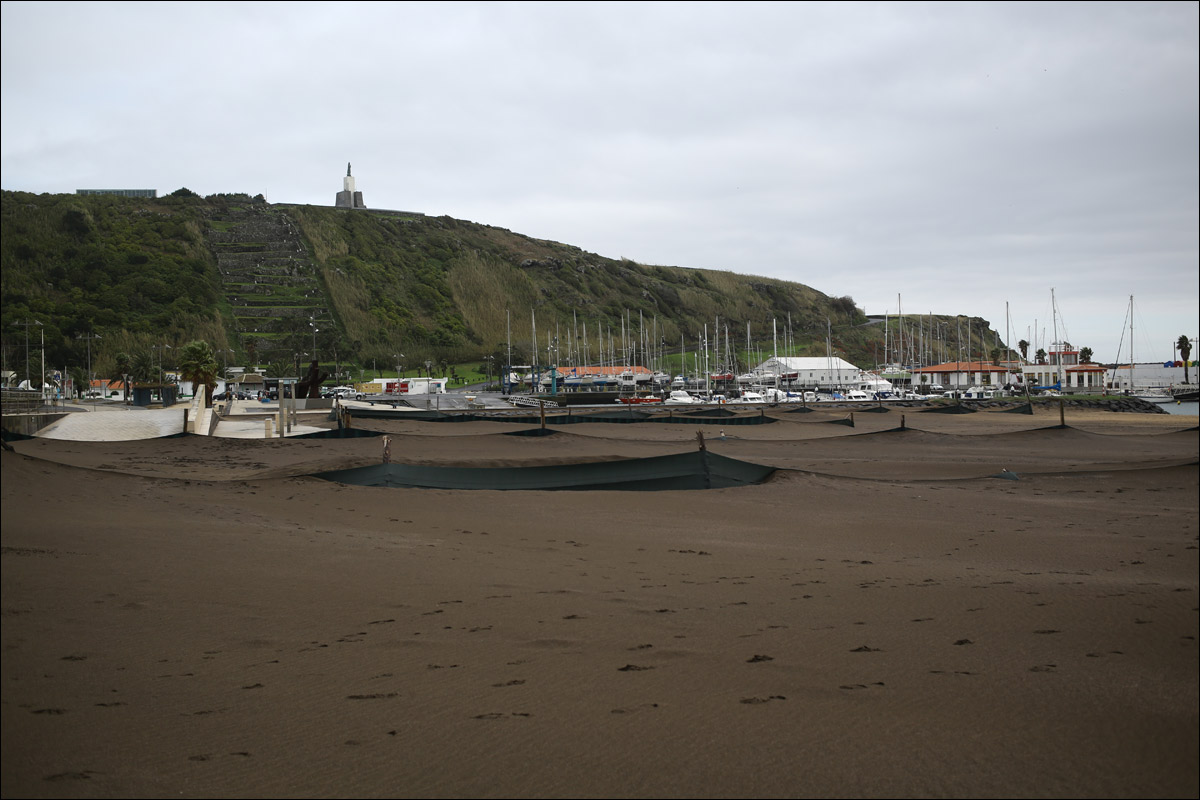
Sand cherish. These barricades with sticks are needed so that the sand does not blow into the sea. By the end of winter, all the sand will be a slide on this side of the beach (these pieces are about a meter originally), and it will be smashed back.

Meat in the local cuisine very much. The logical consequence of the features of agriculture. This is the meat that is baked in a pot, it turns out to be fried from above, boiled from below.
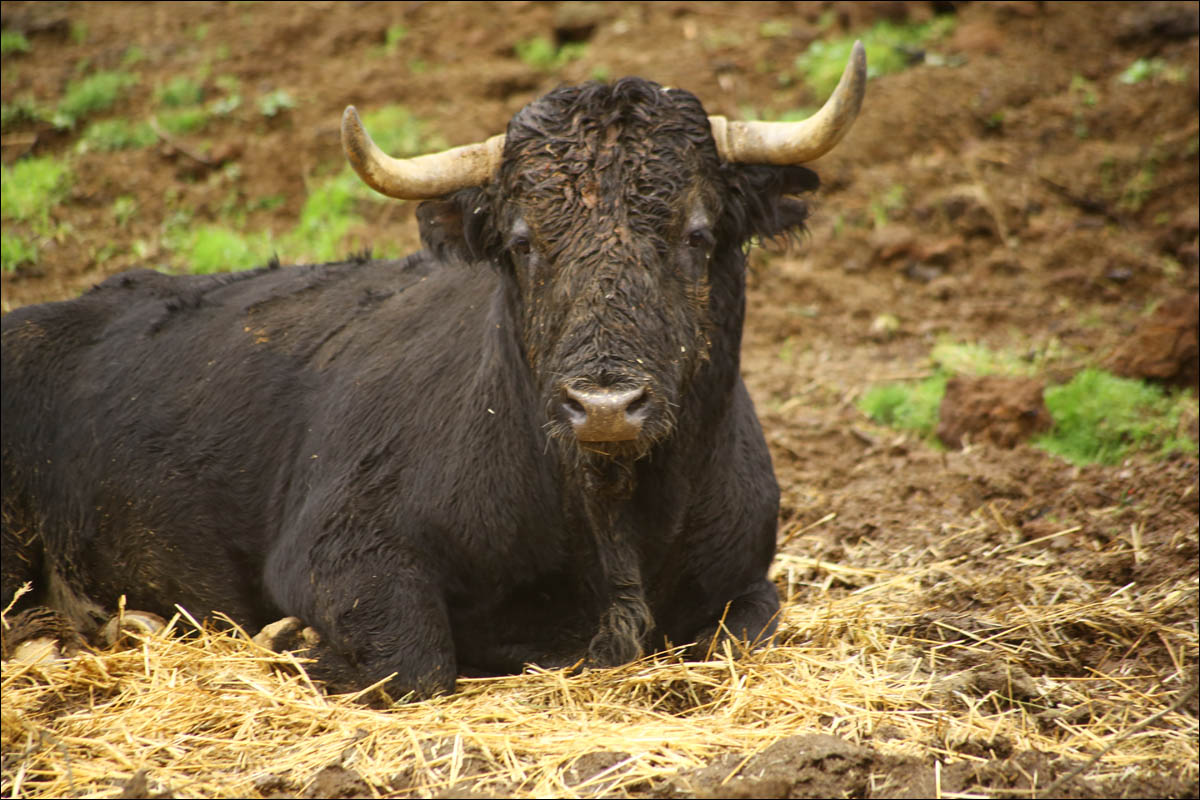
But a potential lunch. Since the colonists did not have a lot of entertainment, a very unique bullfight was formed here. The bull was tied to a pole, and then it was necessary to hold out for a certain period within its radius without running out. The bull was wildly tired, but did not die. Colonist too. But I must admit, once a year, the bulls are still killed at the finals of such competitions.
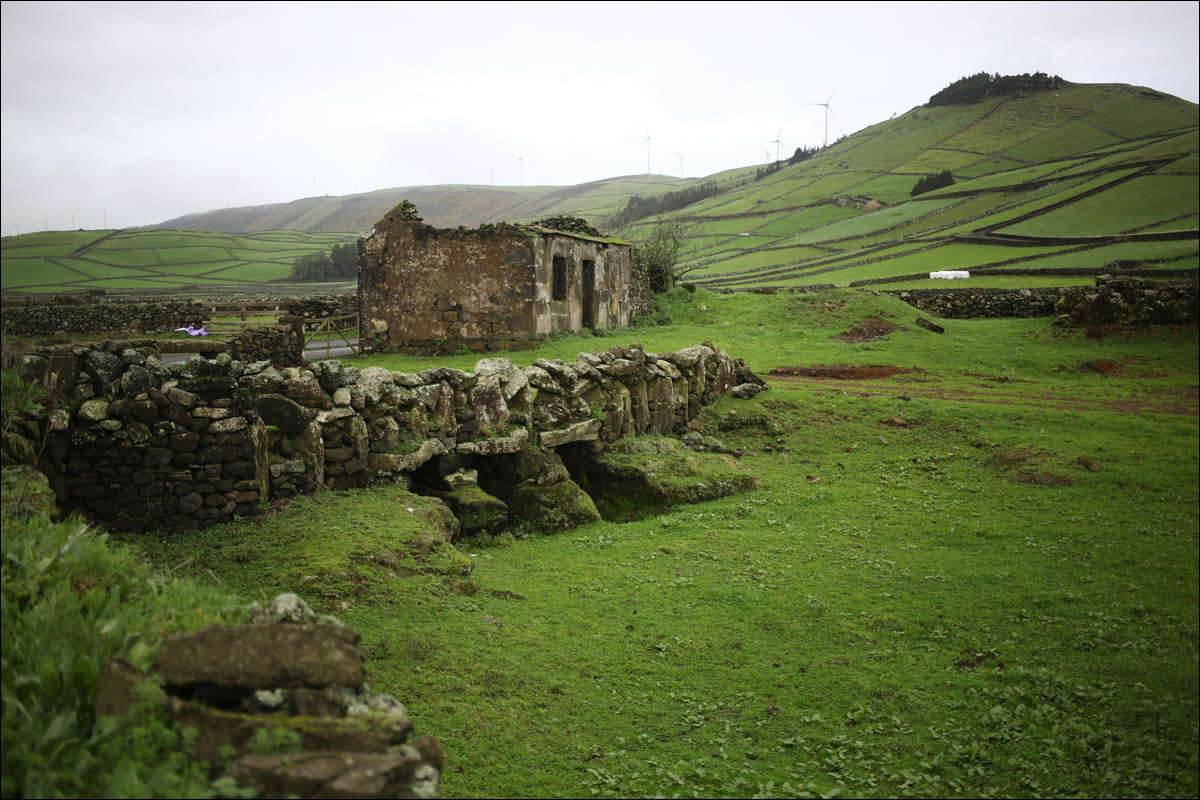
One can see green energy (wind turbine), pastures and an old house. Geothermal energy, wind turbines, batteries (private) are used to generate electricity. Sometimes they specially pick holes up to the warm layers and feed water from the lake there, so that there is steam.
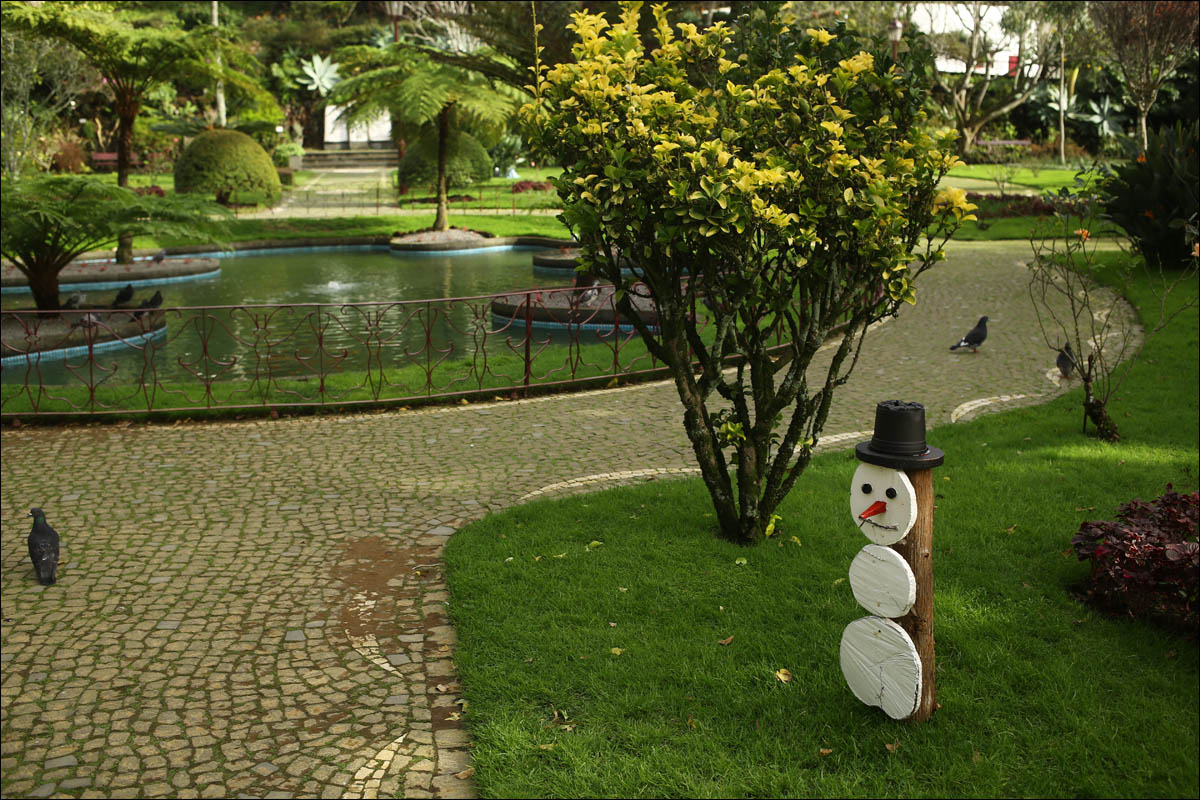
New Year is peculiar at +18.

Old farms are beautiful.

Plants sometimes break open at home. Most often, the walls are peeled off due to moisture (so good paint is important), and then the root climbs there. Concrete in general with a bang is broken by local vines, but a solid stone is far from fast. Although there is a pine, which surely breaks even lava.
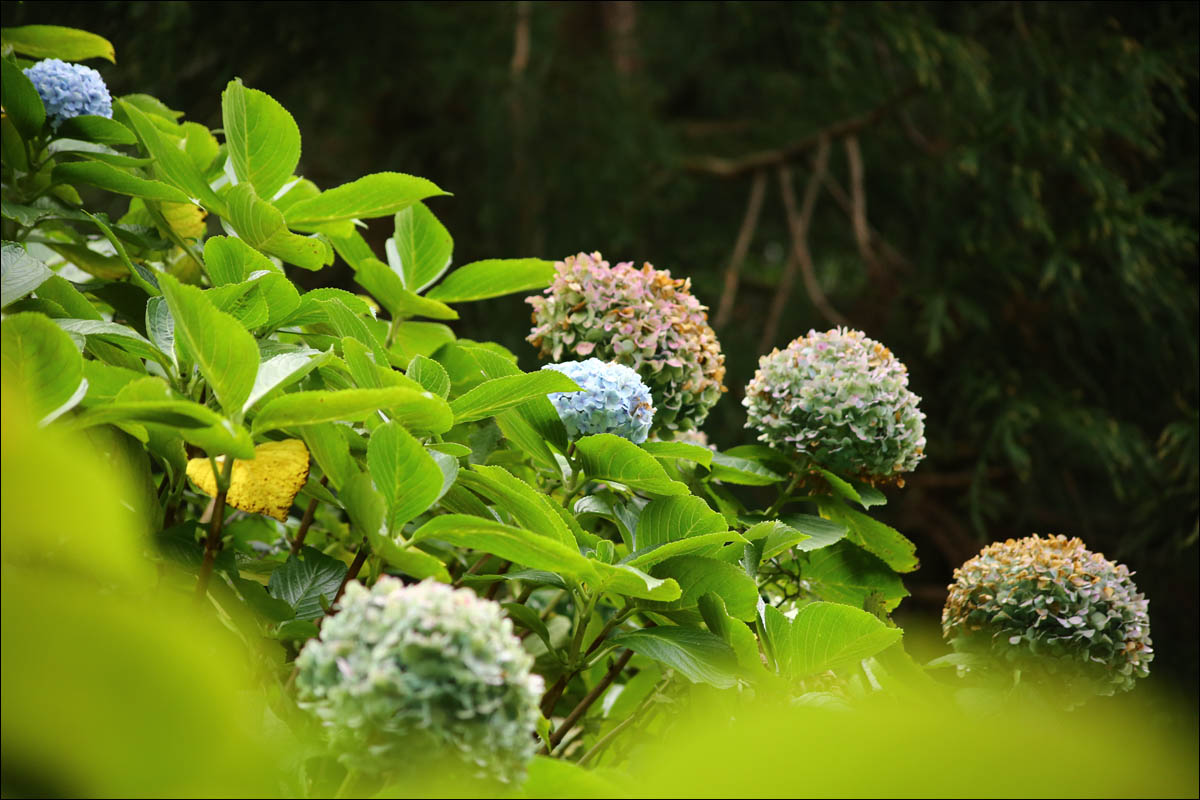
Each island has a color name. For example, Faial - "Blue" because of the blue hydrangeas, Terceira "Violet" because of the purple flowers of vegetation, and so on.
Infrastructure

A typical settlement
Payment for electricity here by the meter, but there is a minimum tariff in the region of 15 euros - you just have to pay it for the line to your site. In this case, the government helps those who take the solar panels, returning half of their cost in something like a tax deduction (as we do after buying an apartment or an expensive operation). At the same time, it is impossible to throw electricity back into the general network.
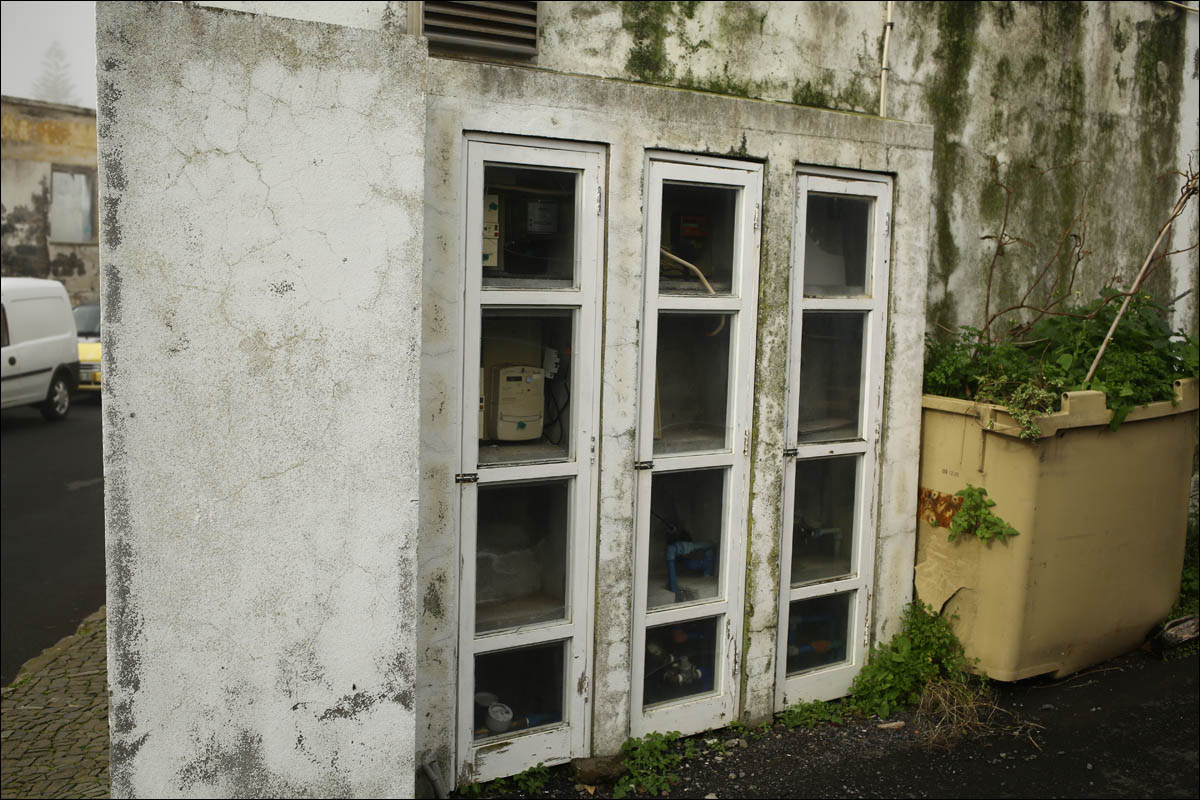
This is how communications are mounted: wet, but the city needs to serve them.
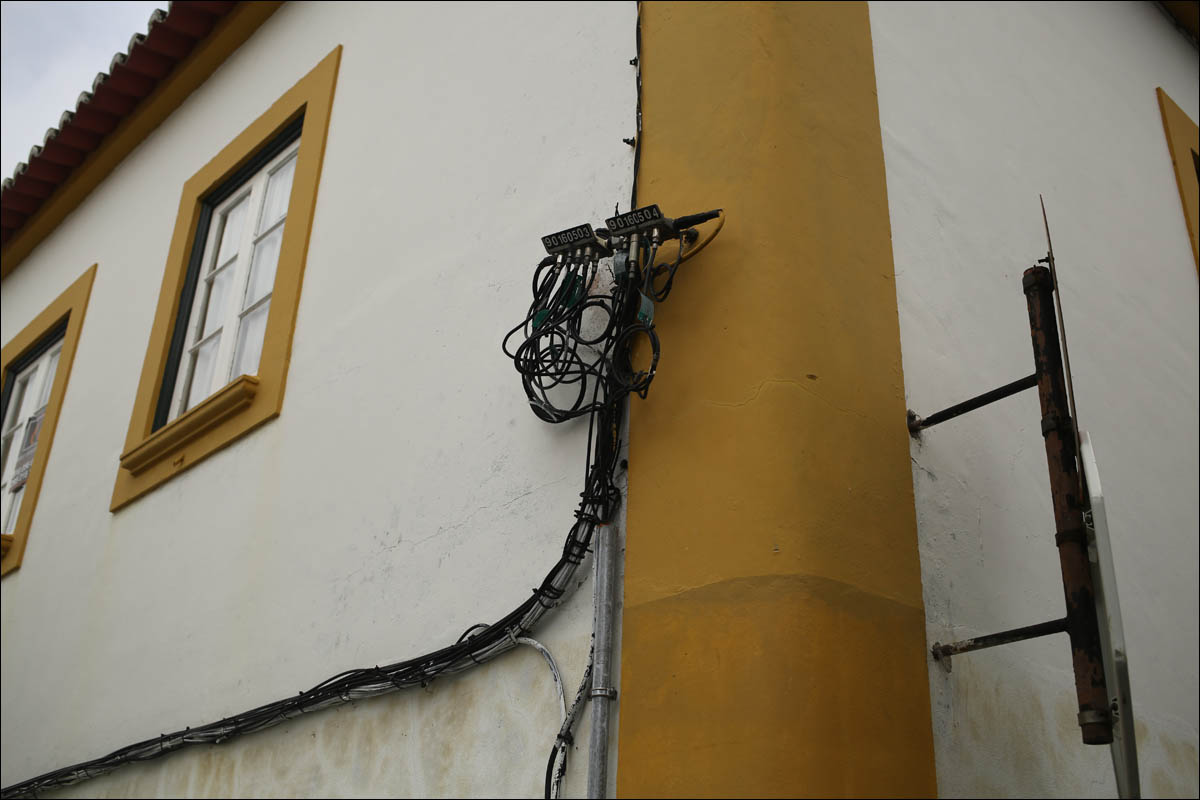
But it also happens. This Azores, there is generally all!
No central heating. In winter, people wear jackets in case of rain and just to keep warm. In restaurants, they sit in jackets. They go to their homes in sweaters. The most progressive put what they call heating systems - heated air conditioners. The government also compensates for part of the cost of equipment of this class.

This is what humidity does with houses
. Tax deductions are offered for the development of the islands. If you are doing something socially useful (for example, restoring a cheese factory or organizing something else strange but useful), you can write a letter to government agencies and they will think about giving you some money back.
There are no universities on the islands (UPD: one already exists), but there are schools. Therefore, many young people study on the “big land” and remain there to work. Now, it seems, a trend has begun to buy summer houses on the islands, because thanks to optical fiber it has become possible to work in the IT sector remotely. And the country with a warm winter is very much in demand by family IT people from northern countries.
From social guarantees - the islander always has the lowest price for a ticket between the islands, even during the high season, with the purchase even an hour before departure. There is an MLA, but without the possibility of choosing a doctor: who will be taken to whom he is being treated. There are health centers on six small islands (like our feldsher points), three large islands have full-fledged hospitals. But even in the case of a dense cluster of Faial-Picot-Jorge, you can reach the hospital in half a day by ferry and car, so the OMC also includes helicopter transport to the hospital. There is also paid medicine, of course.
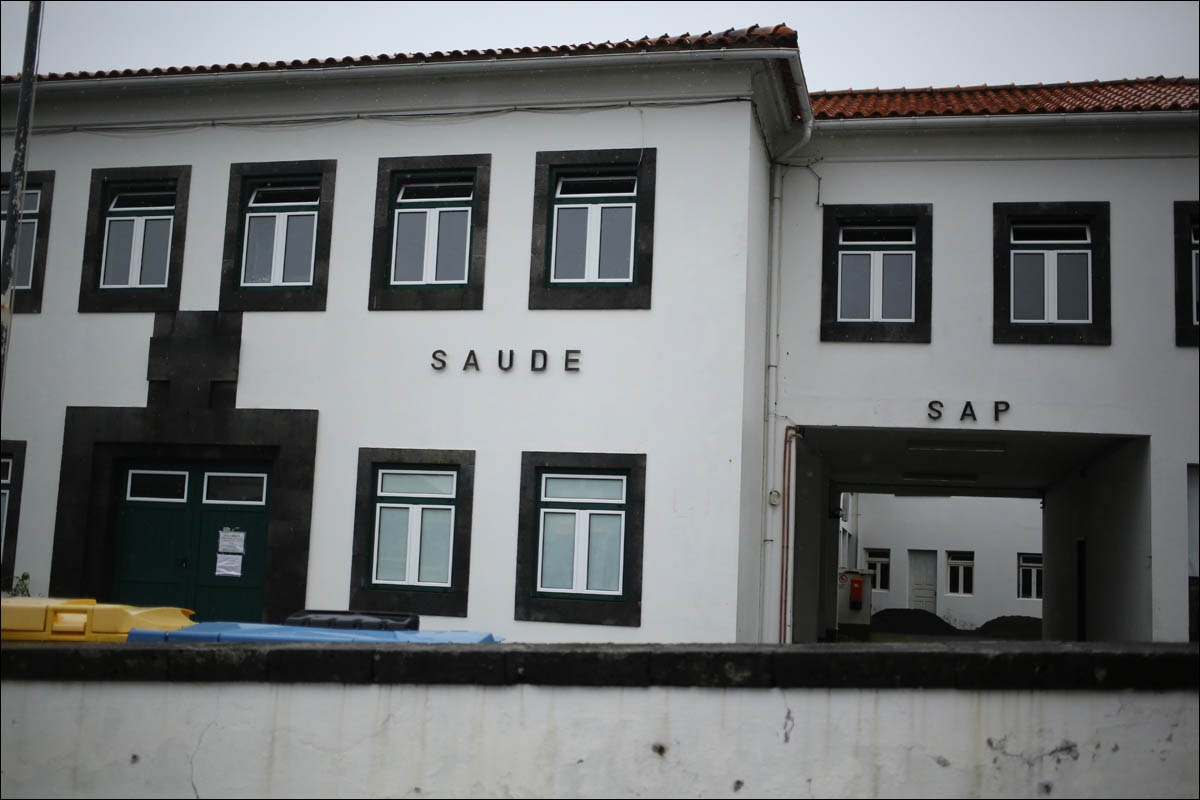
Medical Center

Express pharmacy, there are the same on the streets

Garbage collection: electronics here, separately plastic, paper, glass, the rest. Used oil (after frying, for example) must be poured into a special tank separately.
In 1995, the Azores received the European Prize for nature protection and ecotourism. By the way, they are given a lot of money for ecology from UNESCO, and it passes by the budget of Portugal and goes directly to Azores. But in the coastal waters are now fishing for everything, and not just local fishermen.
Road service has a very dense SLA to eliminate problems that hinder the passage. From a message like “here again, a stone fell out of the mountain” until the arrival of the brigade takes about 40 minutes, then another 10-15 minutes - and the road is clear and repaired in a short time so that everyone can drive.
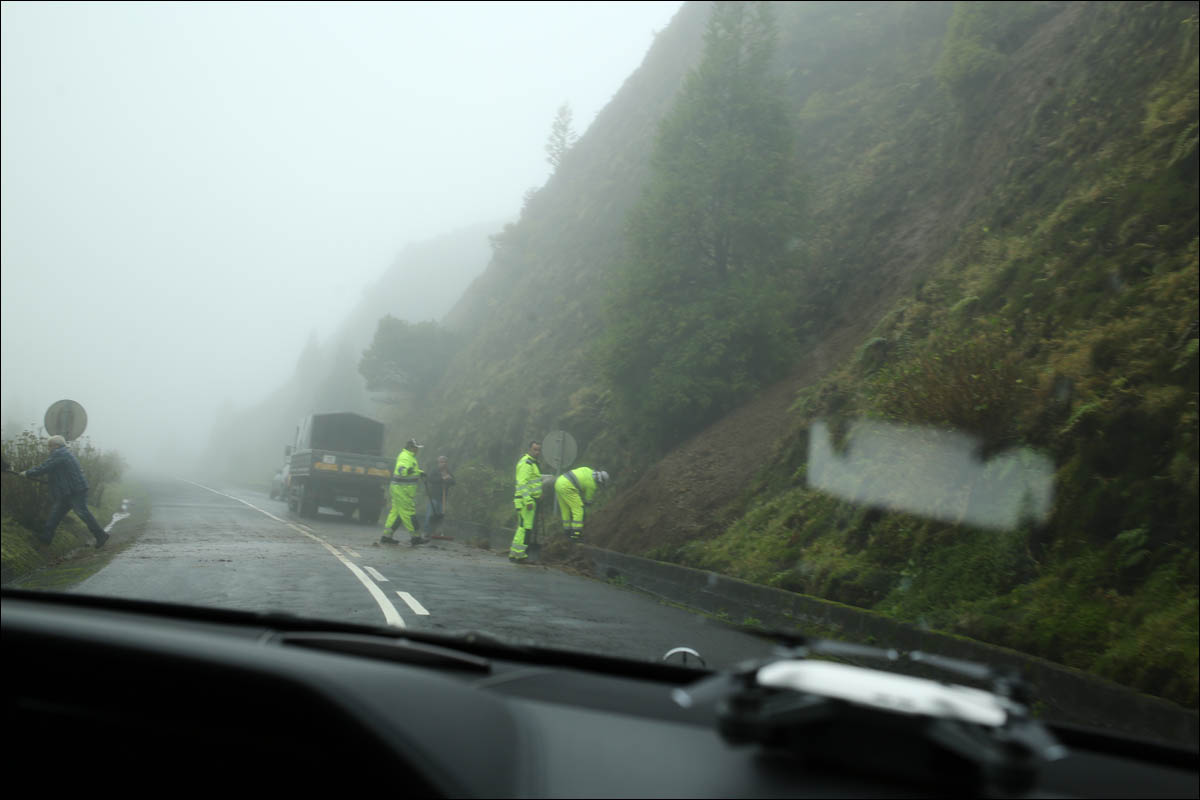
Filmed on San Miguel
Islands are not very big, but they all travel by car. Fayal so generally somehow took the record for the number of cars per person population. A local friend told the following educational story:
- We are now in Terceira. There are 15 minutes - and you are anywhere on the island. I have a friend with Graciosa, there 4 minutes to any place is necessary, and here he was just wildly mad when he had to go to another city for a week. And my brother in Boston, it takes him an hour to get to the office ... I think it's impossible to live like that. But this is how to look.In general, if you want to look at a completely crazy change of microclimates (passed 20 meters - warmed by 5 degrees), dragging off the constantly changing weather, feel the wind on the face, which bends the trees, and just find yourself on a real holiday flora - now you know where to go. The bonus is that it is also cheap (except for plane tickets). Because Portugal is not the richest country in Europe anyway: as they say, there is no corruption, because there is nothing to steal. So, on the islands, prices are even lower and almost do not bite. In comparison with other European countries, of course.
Well, I am still under the impression how incredibly beautifully you can enter cities in a world just exploding with greenery.
UPD: but the post about the island of Faial , a meeting place for all travelers
